An Iron Balloon

You provide the bread and I’ll provide the crumbs.
Let us feed on our banquet of emptiness,
Like ghouls at a christening or body snatchers at the wake.
Let us scavenge for the barest morsels of eternity that may have gone overlooked
Slipped under the layered dust,
Under the sediment left by crumbling ruins of once proud memories now long obsolete.
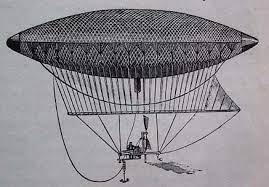
The mirror shatters into a trillion pieces, but who’s counting anyway?
What is there left of the life once imagined?
Once rising above us, over the years,
Once inflated by virtues and memories, and
Now collapsed like a defeated Zeppelin;
Under an Iron Balloon.
© Igor Goldkind October, 2022
Sunflower Seeds Inside Your Pockets

Take these seeds
And thrust them deep inside your pockets
So that when you die and your body becomes the earth
Sunflowers will grow once again from the land you killed to claim.
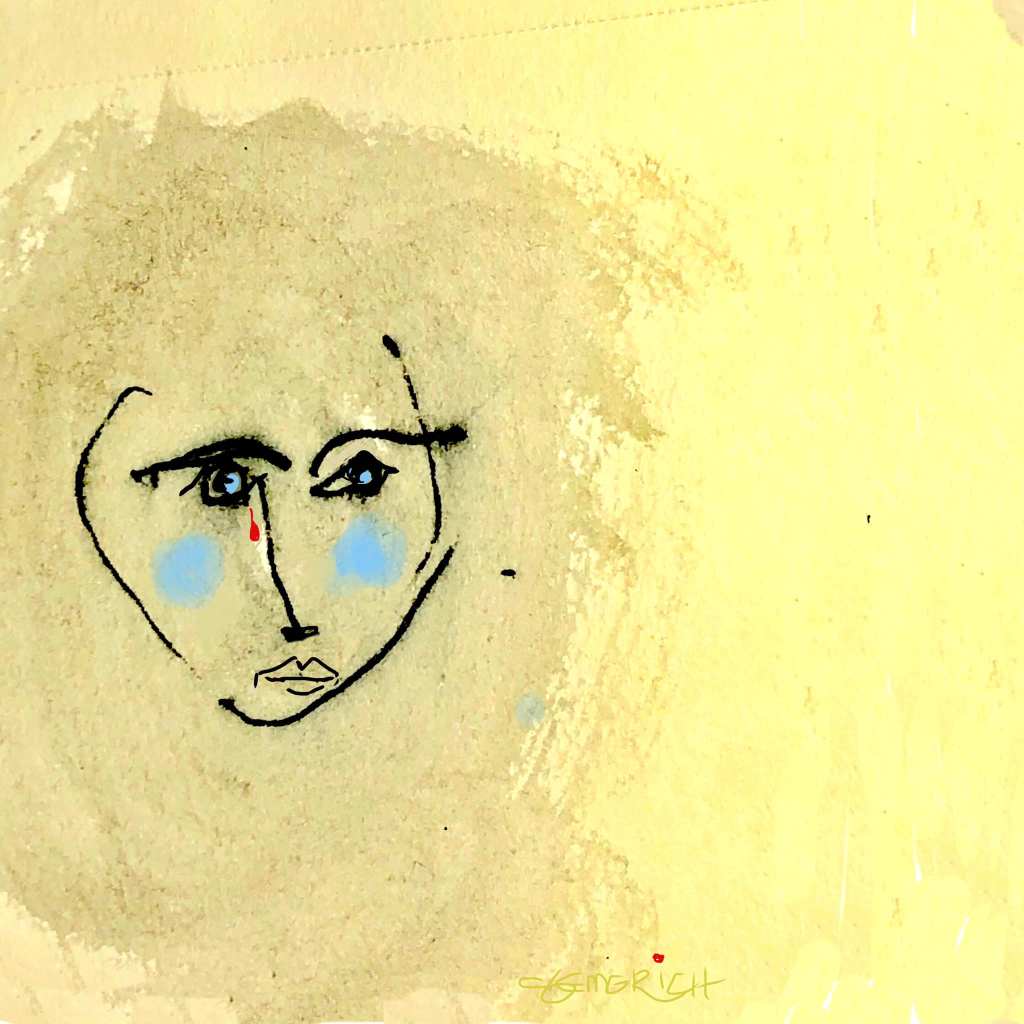
Ballerinas and camouflaged beauty queens will greet you in the streets
With pirouettes of spinning bullets behind barricades of sheets.
My grandmother will serve you up Molotov’s cocktails.
The orphans you murdered will dance around you sleepless until dawn
So that sunflowers will grow once again from the land you killed to claim.
Do you fear for war?
Ask of the stillness evermore,
Ask of the field, or ask the breeze, and ask the birch and poplar trees.
Ask of the children who now lie beneath the birch trees and the sky,
and let their mothers tell you once more
Whether or not you should fear for war.
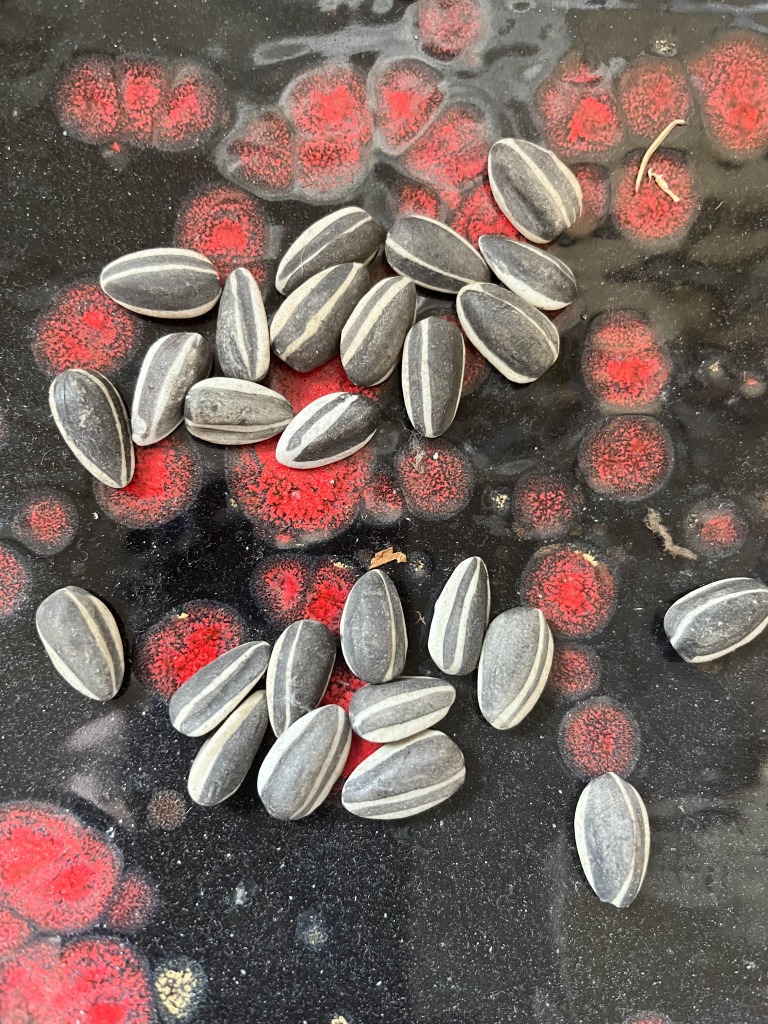
They died so that the children from ev’ry shore
might live without your fear of war.
Ask those who fought, and those erased,
ask those planted in the rubble of Mariupol and Donetsk Oblast
Ask the women you embrace.
ask your mother –ask my wife–,
So that you will wonder never more
Whether you have cause to fear for war.
Who longs for war?
Who longs for war?
No one but those who are no more.
No one living longs for war
But war cares not for your longing or yearning for living.
Or your fears for war
War will always arrive uninvited to your door.
When war comes calling to your front door.
You cannot lock the war outdoors.
You cannot run and hide behind your chair
Or bury your head under the covers of your bed.
When war comes to your front door
There is nowhere to run, nowhere to go
The corpses of your neighbors will hinder your flight
You cannot let fear become your general
To give up the fight
To surrender to might.
Instead, you must stand with the sunflowers in the golden fields
Stand with our heads facing the sun.
Pour your bravery into an empty coke bottle
And pick up a gun.
Stand for freedom, for the children we have lost
Stand up for liberty, against the tide of tyranny.
Stand up for yourself as much as any other.
Summon your courage to stand like man,
Like a like a clown, like a woman, like a child.
The cries of their answer rises loud and clear
for all people, ev’rywhere, to hear.
The message now is as before:
Do not fear,
Do not fear,
Do not fear for war,
For war is already here
© Igor Goldkind March 27, 2022
For the Ukraine and for America

The Seeds of War
Tweet
https://tinyurl.com/Sunflowerseedsinyourpockets
5 Submissions of My Latest Work

Life is Always Replaceable
Being is Becoming Still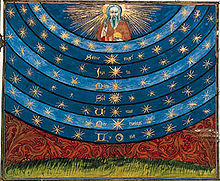
Existence is a limitless screen of emptiness,
Insomniac Awareness
The Last Halo of Hope.
Pebbles
Meditations on My Self

This morning after sitting around and paying attention to nothing for a long while, the pedestrian thought that loitered and would not keep moving down the sidewalk became a realisation.
My self, which I know is an illusion, a trick of perception, occupies too much of my time. I know this fully with my mind even if my heart still clings to safe delusions.
The easiest thoughts to dismiss are the good ones, the comforting ones. The memories of past loves long gone. My mother’s unconditional love, my sister’s devoted, admiring love. The eulogies and compliments I’ve received over time from those who have borne the patience to get to know me just a little bit beyond our facades.
The pleasure I took in surprising my friends with my true nature is easily exiled, easily erased from the Book of Illusion resting on my dusty shelf. But today I awakened to the fact that so it is of the slings and arrows my memory flings at me. The regrets, the failures, the self-loathing for being so much less than I imagine myself to be.
I have welcomed hatred like a long lost friend. When I am targeted by malice or false accusations, I somewhere believe that I am well deserving of acrimony; that deep within me is a broken porcelain doll wearing a torn, stained dress. 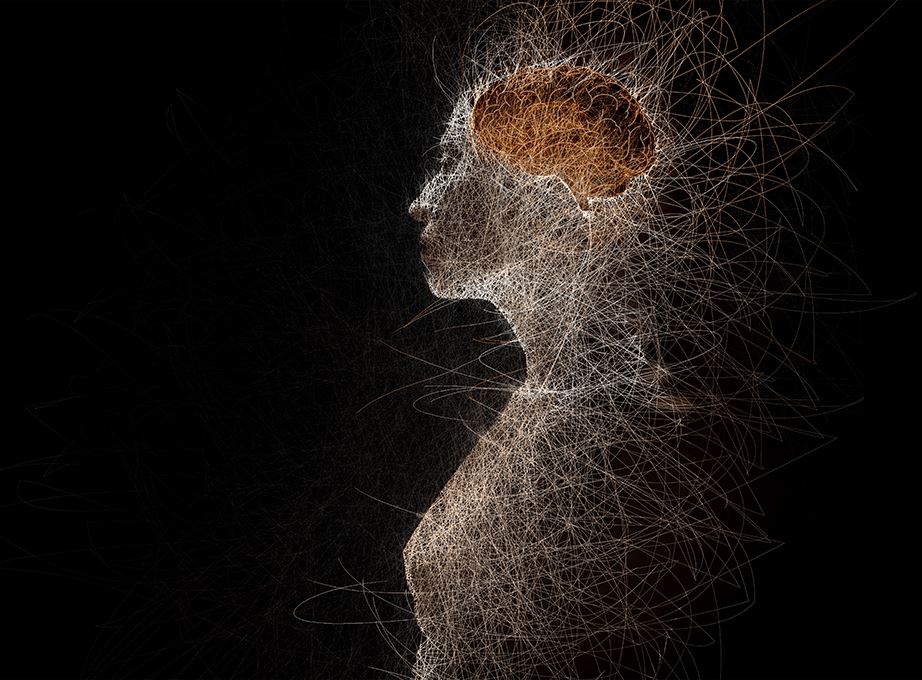 I have sought refuge in self-hatred, in depression, in the idle futility of it all.
I have sought refuge in self-hatred, in depression, in the idle futility of it all.
After all, cynicism is just another mask worn by our own complacency.
This morning, the light shone on me and I laughed at how insidious my vanity could be. To soak in self-loathing is as deluded as celebrating false glories. None of my past is real apart from what I insist on carrying into this present like a troublesome burden; weighing down my footsteps. Stalling the will to keep on moving, with the current, a little further down the road. Misery, the sister of Narcissus, loves company and the good liquor I buy her. But she’s too needy and crazy and no real friend of mind.
I may feel brave wrestling with my demons but they are in truth, made of the same scattered dust as my angels.
My Buddha tells me that enlightenment lies in the transcendence of seeming dualities. The trick of mind in seeing beyond black and white to the full spectrum and subtleties of the colors surrounding me. I can hold my inner sense of self, both magnanimous and self-damning, one in each hand and then bring those hands together, accepting both as one simultaneous truth.
I can know myself completely, even the parts left out.
Rumi says that beyond right and wrong, beyond good and evil, lies the desert of disillusionment.
At the end of the desert there is an oasis and in the middle of the oasis is a fountain and that fountain is the source of all Life.
Do me a favour, next time you feel down about yourself, undeserving of love, miserable and useless; do not blow the feelings away but rather hold them in one hand. Then with the other hand conjure the feelings of pride, of self-worth of glorious love. Hold each sense of yourself like a ball in each of your hands while substituting either/or with both/and. Now bring your hands together in gratitude for the whole of who you are.
Tell me how that feels.
Write it here, just beneath these words.
The Halo of a Hope


Hope is mortal, not eternal.
Though it may feel like eternity
Sitting in a chair by the window.
Gazing up and down the path that leads
Up the hill and down to the canyon on your doorstep.
Every morning, every evening, every day.
Waiting for an answer to your prayer for hope to be restored.
Resilience rewarded
Patience still burning brightly
Under your old photograph on the wall where you live now.
I’m not sad.
No, sadness is just passing rain to irrigate the eyes.
Instead, I’m a new planet
Ringed by the last halo of hope
The one wrapped tightly around my head.

Pebbles

Pebbles
Thoughts are merely pebbles
Being gently washed by a passing stream.
You are the stream.
Beach Pebbles
Thoughts are merely beach pebbles
Being gently rounded by passing waves.
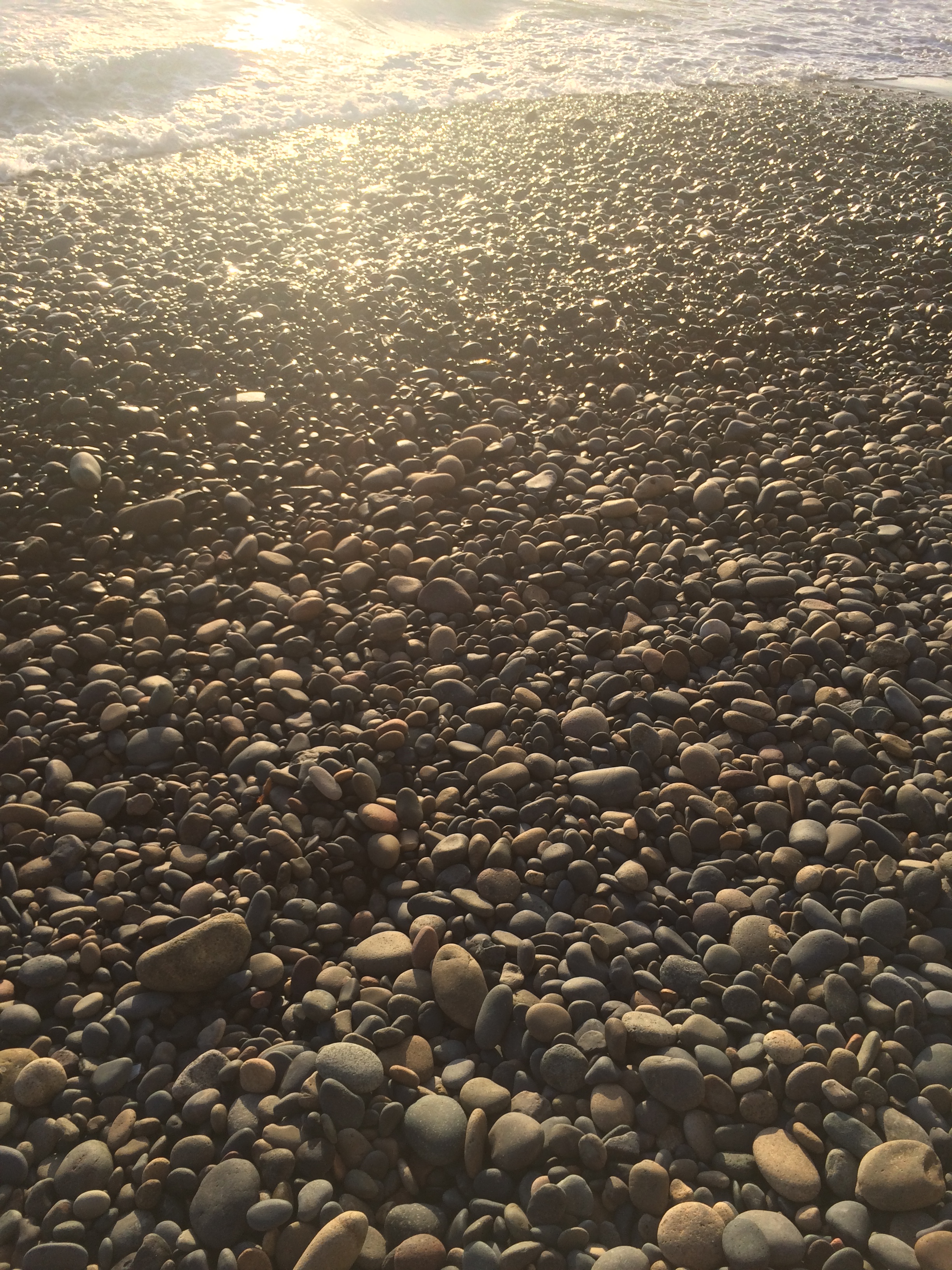
Pebbles
You are the waves.
Sand Pebbles
Thoughts are merely pebbles in the sand.
Being gently worn by the passing wind.
You are the wind.
Words are pebbles.
Words are merely thoughts
Being gently read by a passing eye.
You are the eyes
That can read my thoughts.
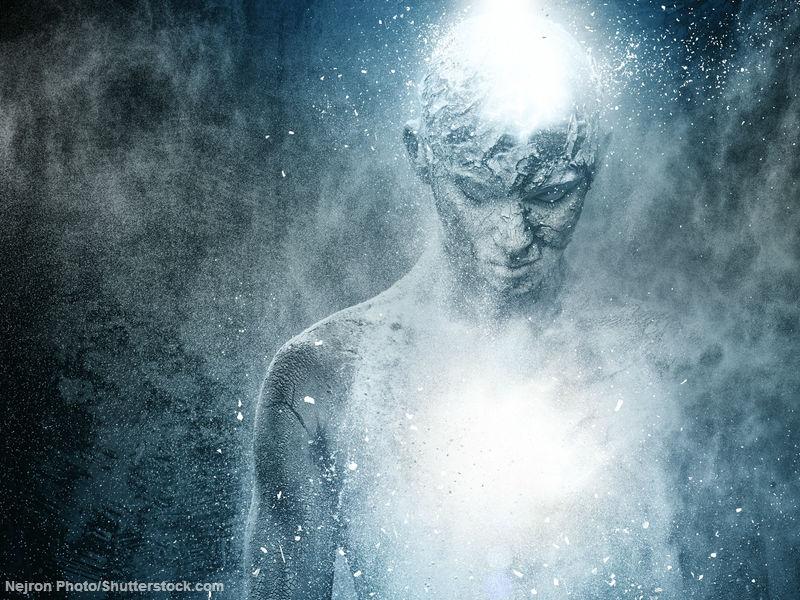
Thoughts
Being is Becoming Still


Existence is a limitless screen of emptiness,
Jubilant celebration
And gratitude for the joyous exhaustion in the rolling of a boulder up a steep hill.
Tripping over our thoughts like loosened cobblestones,
The truth is a truce we struck with uncertainty ages ago.
After losing our desperate struggle…
To cling to some kind of hope buried deep at the root of our own awareness
I am fearful of fully failing myself.
But I love myself best when I am alone with eternity.
Secure and supported by this very clarity.
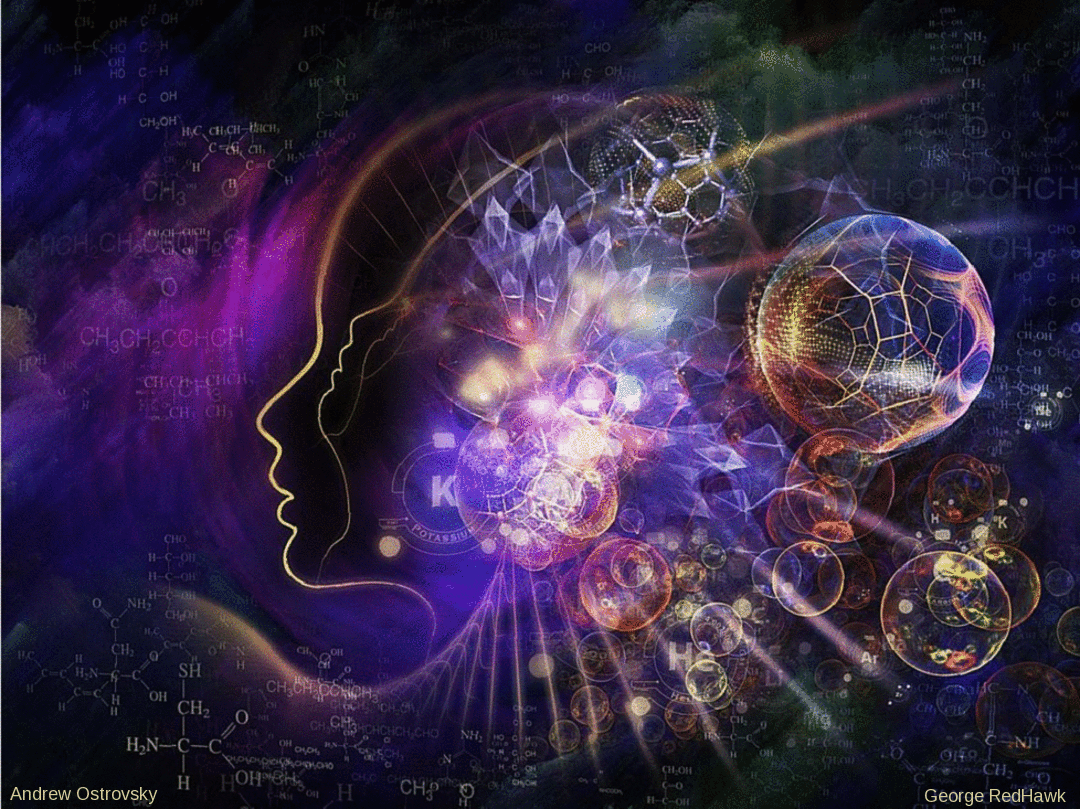
Blue Notes

 Depression is merely an afterthought.
Depression is merely an afterthought.
 We are slaves to our memories
We are slaves to our memories
Your Soul

So who is this Soul that you sing of?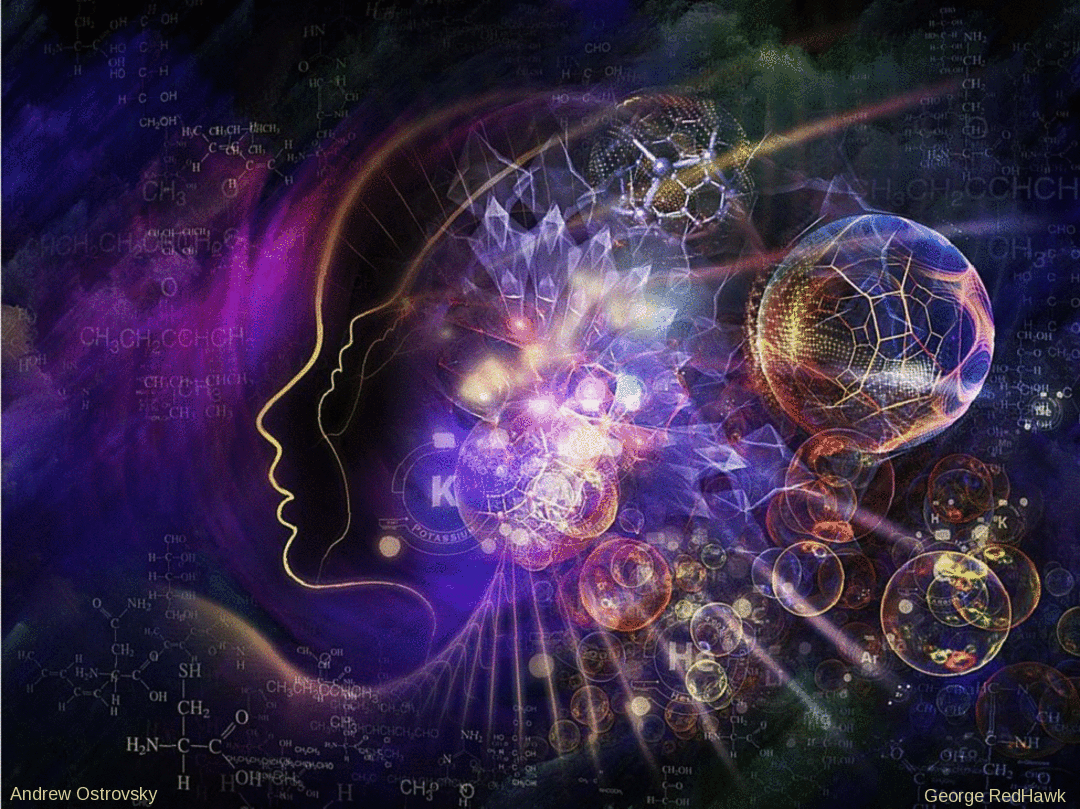
This silent witness
Who counts the leaves off of trees
Instead of gathering them?
And raking them into a funerary pile,
Into the giant pile that your better self will set afire and then fall from,
Or jump into.
Up to your eyeballs,
Up to your own personal crown of thorns.
A Short History of Poetry Therapy: Practice and Perfection by Igor Goldkind

On FaceBook, a discussion where questions are posed and answered: https://www.facebook.com/realpoetrytherapy/
The healing effect of words has long been recognized. As far back as 4000 BCE, early Egyptians wrote words on papyrus, dissolve them in liquid, and gave them to those who were ill as a form of medicine. In more recent history, reading and expressive writing have been employed as supplementary treatments for those experiencing mental or emotional distress. Pennsylvania Hospital, the first hospital established in the United States, employed this approach as early as the mid-1700s. 
In the early 1800s, Dr. Benjamin Rush introduced poetry as a form of therapy to those being treated. In 1928, poet and pharmacist Eli Griefer began offering poems to people filling prescriptions and eventually started “poem-therapy” groups at two different hospitals with the support of psychiatrists Dr. Jack L. Leedy and Dr. Sam Spector. After Griefer’s death, Leedy and others continued to incorporate poetry into the therapeutic group process, eventually coming together to form the Association for Poetry Therapy (APT) in 1969.
Librarians also played a major role in the development of this approach to therapy. Arleen Hynes, one pioneer in this area, was a hospital librarian who began reading stories and poems aloud, facilitating discussions on the material and its relevance to each individual in order to better reach out to those being treated and encourage healing. In 1980, all leaders in the field were invited to a meeting to formalize guidelines for training and certification. At that meeting,  the National Association for Poetry Therapy (NAPT) was established.
the National Association for Poetry Therapy (NAPT) was established.
As interest grew, several books and articles were written to guide practitioners in the practice of poetry therapy. Hynes and Mary Hynes-Berry co-authored the 1986 publication Bibliotherapy – The Interactive Process: A Handbook. More recently, Nicholas Mazza outlined a model for effective poetry therapy, also discussing its clinical application, in Poetry Therapy: Theory and Practice.
The Journal of Poetry Therapy, established in 1987 by the NAPT, remains the most comprehensive source of information on current theory, practice, and research.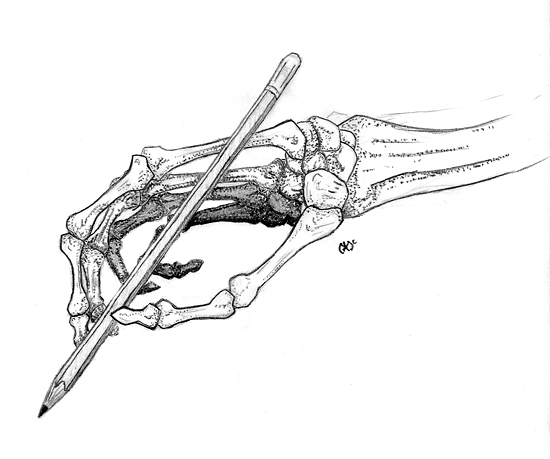
There is also a relationship between psychological healing and incantations; either repeated as a musical chant by the patient or in fact recited by the attending medicine man. Modern medicine and science of course scoff at the notion of magical incantations having healing or restorative powers as so much superstition. But this, of course, begs the question that if recitations and incantations had no evidential resort and no beneficial property then why would every single human culture have adopted the method and repeated it for several thousand years? Surely if there was nothing to vibrating air with the sound of one’s breath as well as the added stimulation of associative meaning being read cognitively by the patient’s mind; we would have given it and its sisters, singing and chanting aeons ago.
I am 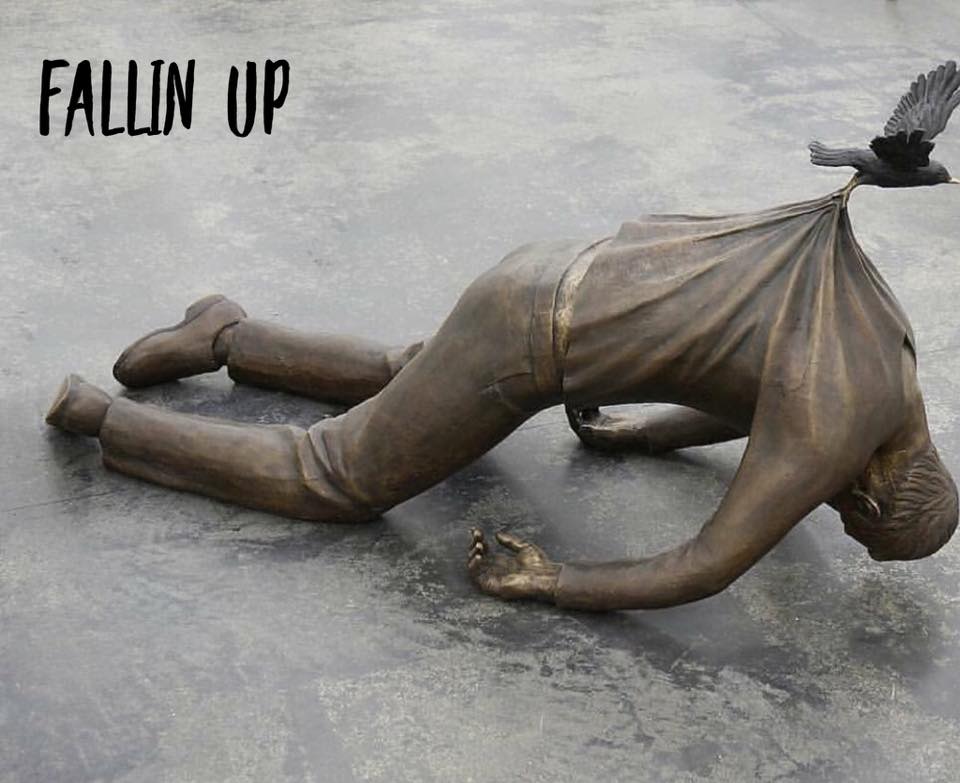 not advocating a supernatural or spiritual causation for the effectiveness of poetry as a healing agent but rather the supra-natural mystical cause which is grounded first in human nature and behavior for which can be a myriad of imprecise explanations; none of which explain why it works.
not advocating a supernatural or spiritual causation for the effectiveness of poetry as a healing agent but rather the supra-natural mystical cause which is grounded first in human nature and behavior for which can be a myriad of imprecise explanations; none of which explain why it works.
Today, poetry therapy is practised internationally by hundreds of professionals, including poets, psychologists, psychiatrists, counsellors, social workers, educators and librarians. The approach has been used successfully in a number of settings—schools, community centers, libraries, hospitals, rehabilitation centers, and correctional institutions, to name a few.
How Does Poetry Therapy Work?
As part of therapy, some people may wish to explore feelings and memories buried in the subconscious and identify how they may relate to current life circumstances. Poetry is beneficial to this process as it can often be used as a vehicle for the expression of emotions that might otherwise be difficult to express
•Promote self-reflection and exploration, increasing self-awareness and helping individuals make sense of their world
•Help individuals redefine their situation by opening up new ways of perceiving reality
•Help therapists gain deeper insight into those they are treating
• In general, poetry therapists are free to choose from any poems they believe offer therapeutic value, but most tend to follow general guidelines.
It is recommended selected poems be concise, address universal emotions or experiences, offer some degree of hope, and contain plain language. Some poems commonly used in therapy are: “The Journey” by Mary Oliver “Talking to Grief” by Denise Levertov “The Armful” by Robert Frost “I Wandered Lonely as a Cloud” by William Wordsworth “Leaves of Grass” by Walt Whitman “Turtle Island” by Gary Snyder The poetry of Alan Watt, Allen Ginsberg and others.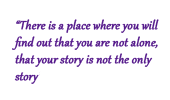
Although the selection of material is often by the therapist, those being treated might be asked to bring to therapy a poem or other form of literature they identify with, as this may also provide valuable insight into their feelings and emotions.
My Technique in Poetry Therapy
A few different models of poetry therapy exist, but the one I’ve had the most success with is a Four Phased Progression of Attention:
Recognition – Focus – Intention – Action
In the receptive/recognition phase, the poet therapist merely guides the subject to focus on their issue. The aim is to establish concentration and cognitive focus on the details of the issue which are not revealed to the poet/therapist. Only until the poet/therapist feels confident that the subject is cognitively attuned to and non verbally focussed on the problem or issue of concern that they begin to ask suggestive questions as to how the subject feels, not thinks about their subject.

This provocation of emotion usually comes in three distinct phases of emotional content:
I. First is the one of the predicament, then the subject first becomes aware of the existence of the issue. This is the gateway phase where anticipatory feelings are registered and ideally conveyed through the prompting of the poet/therapist.
II. Then there is the full throttle stage when anticipation of the issue has given way to full experience of all emotions related to the issue. This is usually overwhelming (or it wouldn’t be “an issue” in the first place), and it is tantamount that the poet/guide leads the subject through distinct words to describe the layers of emotions experienced by the subject. Language and the use of the words is the key here because emotions always come in clusters of complexity that make it difficult for both poet/therapist and subject to distinguish and focus on underlying and suppress emotions.
“What kind of anger do you feel?”
“How would you describe your sadness”
“How much shame do you feel?
“What would you compare it to?”


Are typical of the questions a poet therapist would ask the subject.
This is a sophisticated method of word association but rather than creating bridges between seemingly disparate words, the goal is to drill down to the core emotions about the issue by uncovering and refining the language the subject has chosen.
Achieving exactitude of description is the task at hand. The Poet/Therapist makes careful notation of everything the subject says towards describing their emotion. It is important to keep them focused and not to succumb to intellectual distraction. Thoughts are illusions, emotions are facts.
Getting the subject to correctly and precisely describe the emotional facts of the matter at hand is the objective
III. The final phase is the exit strategy.
How do the feelings commence to recede? How does the issue recede back into the background? What are the parting emotions? Is there anxiety about the leaving? The anticipation of an issue yet unresolved? Or is the issue impermeable and subject to a rhythmic return?
Again, the subject’s wording, their adjectives, adverbs and phrases are the material of the poem.
At this point, there is usually a short break to give time for the subject to recover from the emotional transitions and for the Poet/Therapist to briefly skim their notes and begin to focus on the flow of adjectives. It is preferable if possible, to compose what amounts to a first draft, a flow of words which the poet can read back to the subject to confirm the accuracy of the flow.
At this first reading stage, it is possible to start interjecting logical bridges between the emotional descriptors. This is the creative factor unleashed. The Poet must be led by the subject to link coherent sequences between the emotional states. The poet suggests and the subject confirms or vetoes the phraseology, one line at a time.
Now we arrive at a second draft which is the property of the subject. It is their poem for which it is crucial that the subject now read the poem aloud and take ownership of its content. The subject can redraft the poem a third time in making it their own. But the physicality of uttering the words they have chosen to express their emotional state is an act of ownership and closure.
The Poet/Therapist can either email the finished poem to the subject, hand them his/her notes or rewrite the poem into a legible form. In any case, it is important that the Poet/Therapist ascribes the authorship of the poem to the client. If the client is hesitant to put their name to the poem than something is lacking in the poem and must be redressed or indeed started over again.
The key to the entire exercise is freedom of expression, honesty and then refinement; exacting the poem.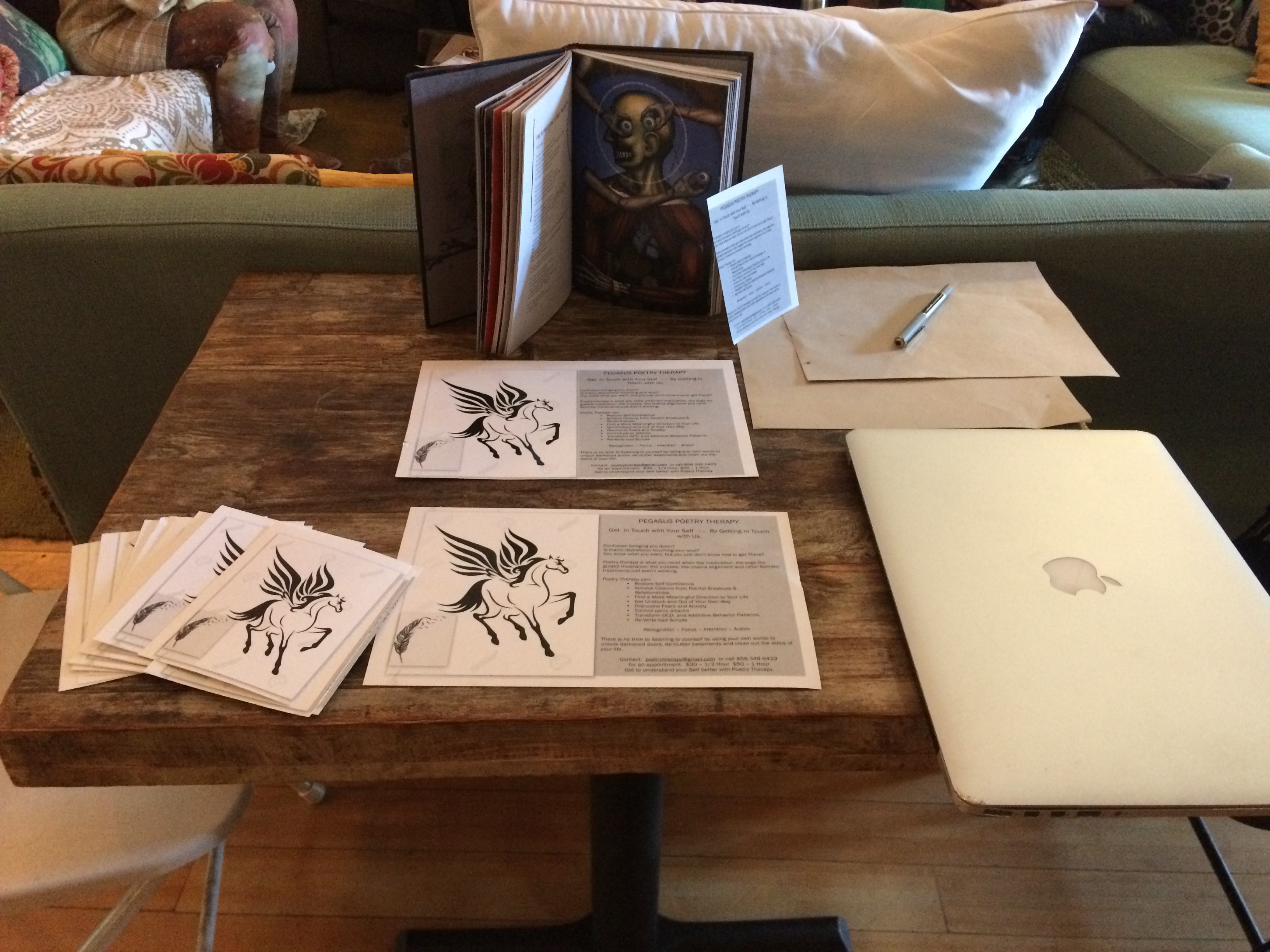
Other Approaches and Other Models
The process of writing can be both cathartic and empowering, often freeing blocked emotions or buried memories and giving voice to one’s concerns and strengths. Some people may doubt their ability to write creatively, but therapists can offer to support by explaining they do not have to use rhyme or a particular structure. Therapists might also provide stem poems from which to work or introduce sense poems for those who struggle with imagery. A Poet/Therapist might also share a poem with the individual and then ask them to select a line that touched them in some way and then use that line to start their own poem.
In group therapy, poems may be written individually or collaboratively. Group members are sometimes given a single word, topic, or sentence stem and asked to respond to it spontaneously. The contributions of group members are compiled to create a single poem which can then be used to stimulate group discussion. In couples therapy, the couple may be asked to write a dyadic poem by contributing alternating lines.
The symbolic/ceremonial component involves the use of metaphors, storytelling, and rituals as tools for effecting change. Metaphors, which are essentially symbols, can help individuals to explain complex emotions and experiences in a concise yet profound manner. Rituals may be particularly effective to help those who have experienced a loss or ending, such as a divorce or death of a loved one, to address their feelings around that event. Writing and then burning a letter to someone who died suddenly, for example, may be a helpful step in the process of accepting and coping with grief.
How Can Poetry Therapy Help You?
Poetry therapy has been used as part of the treatment approach for a number of concerns, including borderline personality, suicidal ideation, identity issues, perfectionism, and grief. 
Research shows the method is frequently a beneficial part of the treatment process. Several studies also support poetry therapy as one approach to the treatment of depression, as it has been repeatedly shown to relieve depressive symptoms, improve self-esteem and self-understanding, and encourage the articulation of feelings. Researchers have also demonstrated poetry therapy’s ability to reduce anxiety and stress in people.
Those experiencing post-traumatic stress have also reported improved mental and emotional well-being as a result of poetry therapy. Some individuals who have survived trauma or abuse may have difficulty processing the experience cognitively and, as a result, suppress associated memories and emotions.
Through poetry therapy, many are able to integrate these feelings, reframe traumatic events, and develop a more positive outlook for the future. People experiencing addiction may find poetry therapy can help them explore their feelings regarding the substance abuse, perceive drug use in a new light, and develop or strengthen coping skills.
Poetry writing may also be a way for those with substance abuse issues to express their thoughts on treatment and behavior change. Some studies have shown poetry therapy can be of benefit to people with schizophrenia despite the linguistic and emotional deficits associated with the condition. 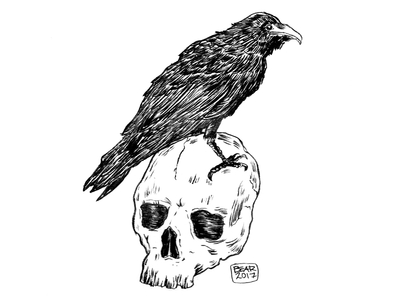
Poetry writing may be a helpful method of describing mental experiences and can allow therapists to better understand the thought processes of those they are treating. Poetry therapy has also helped some individuals with schizophrenia to improve social functioning skills and foster more organized thought processes. It is important to note in many instances, especially in cases of moderate to severe mental health concerns, poetry therapy is used in combination with another type of therapy, not as the sole approach to treatment.
Training for Poetry Therapists Poetry therapists receive literary as well as clinical training to enable them to be able to select literature appropriate for the healing process. While there is no university program in poetry therapy, the International Federation for Biblio-Poetry Therapy (IFBPT), the independent credentialing body for the profession, has developed specific training requirements. Several studies support poetry therapy as one approach to the treatment of depression, as it has been repeatedly shown to relieve depressive symptoms, improve self-esteem and self-understanding, and encourage the expression of feelings.
Concerns and Limitations of Poetry Therapy
In spite of its widespread appeal and broad range of application, some concerns have been raised about the use of poetry therapy. Some critics have pointed out it is possible for people to analyze a poem on a purely intellectual level, without any emotional involvement. This type of intellectualization may be more likely when complex poems are used, as a person might spend so much time trying to decipher the meaning of the poem that they lose sight of their emotions and spontaneous reactions. Poems that are unoriginal or filled with clichés are unlikely to stimulate individuals on a deep emotional level or challenge them to think in ways that promote growth. Just always keep in mind that poetry therapy may have little or no value for those individuals who simply do not enjoy poetry.
The Advertising Pitch:
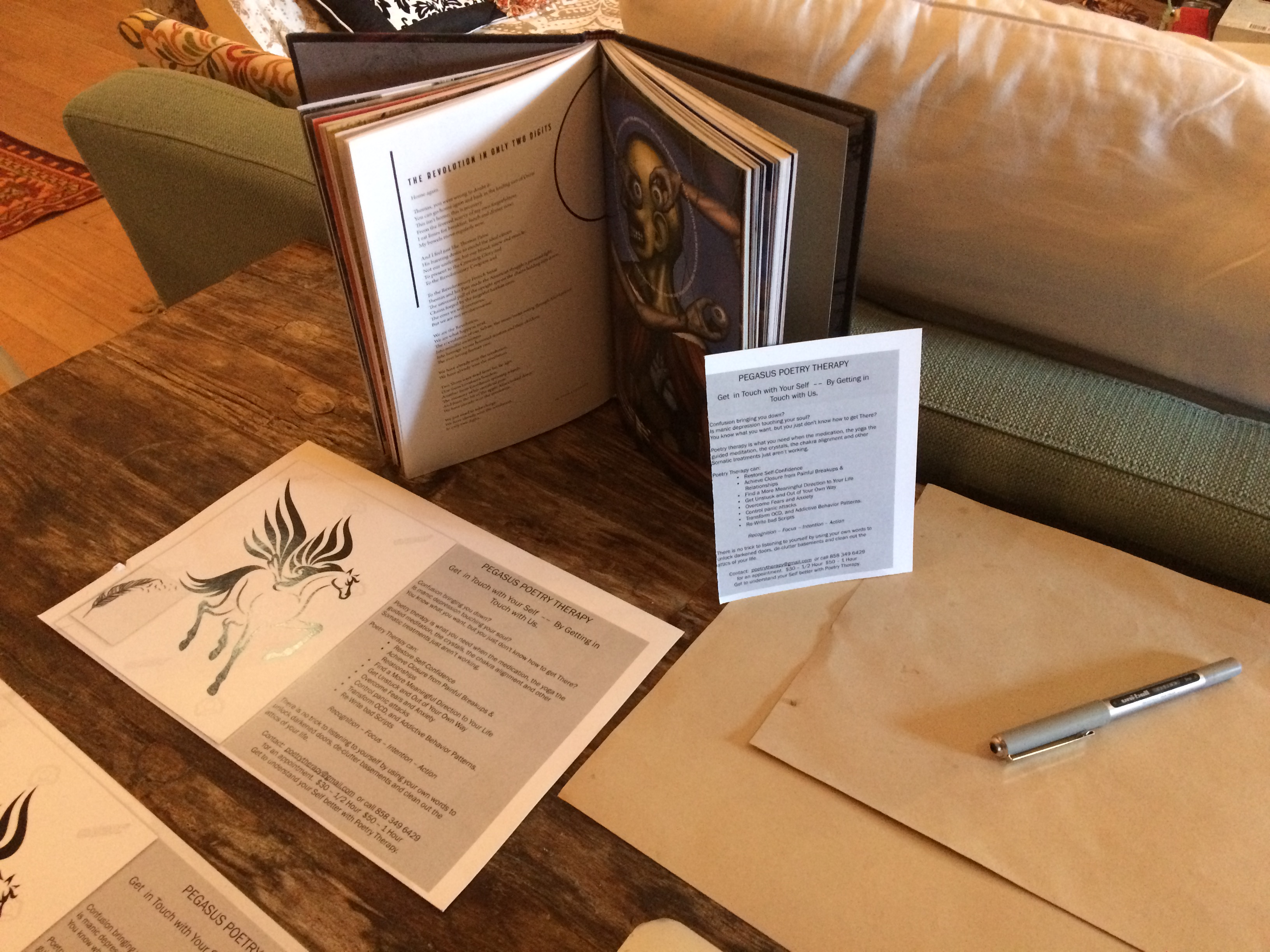
Words are the Most Powerful Magic There Is
Sometimes Your Mind Has a Will of Its Own
With PEGASUS POETRY THERAPY you can
Learn How to Read Your Own Mind!
Confusion bringing you down?
Is manic depression touching your soul?
You know what you want, but you just don’t know how to get There?
Poetry therapy is what you need when the medication, the yoga, the guided meditation, the crystals, the chakra alignment and other Somatic treatments just aren’t working.
Some things only work when you let them work:
• Restore Self-Confidence
• Achieve Closure from Painful Relationship Breakups & Lost Loved Ones
• Find a More Meaningful Direction to Your Life
• Get Unstuck and Out of Your Own Way
• Overcome Fears and Anxiety
• Control panic attacks
• Change Addictive Behavior Patterns, like OCD
• Re-Write bad Scripts
Recognition > Focus > Intention > Action
 There is no trick to listening to yourself and learning how choosing and rearranging your words can unlock darkened doors, de-clutter basements and clean out the attics of your life. Sometimes in merely one session.
There is no trick to listening to yourself and learning how choosing and rearranging your words can unlock darkened doors, de-clutter basements and clean out the attics of your life. Sometimes in merely one session.
Every Tuesday from 11:00 am until 6:30 pm at the
Inner Temple Inner Healing Center
at Eve’s Vegan Cafe 575 S. Coast Highway 101 Encinitas, CA
Contact: realpoetrytherapy@gmail.com or
Call 858 349 6429 for an appointment.
$50- 1/2 Hour $80 – 1 Hour 
EXAMPLES & ENDORSEMENTS
PEGASUS POETRY THERAPY has only recently launched its online version via FaceTime, Skype or Facebook video.  Just add <poetry therapy> to your Skype contacts and schedule a date. Payments accepted through PayPal or Facebook cash. Here are some examples of the poetry achieved through PEGASUS POETRY THERAPY:
Just add <poetry therapy> to your Skype contacts and schedule a date. Payments accepted through PayPal or Facebook cash. Here are some examples of the poetry achieved through PEGASUS POETRY THERAPY:
I.
Narcissus in a Nutshell
I’ve lost the person locked within the situation
Like a nut dwells within its hard shell of fearful anger.
Escaping vulnerability
Hiding from the unknown.
Hard shells, hard feelings, hardness itself
The excitement of living days in the present
Belonging to the past
I will not let go of what I can recall but not relive
My belonging to that which encompasses myself
Another nut within its shell.
To belong is to exist
Without belonging there is Nothing and
I fear nothing most of all because I do not know it
And I fear what I do not know more than
I would remedy the pain of this loss with trustworthy tools
When two liquids are bonded as one
A single drop of poison poisons the whole glass
And betrayal is always poison no matter how little or how much
The glass of Narcissus’s tears is now empty
He has blinded himself rather than drink his own poison.
Instead he has left me to sip the bitter poison
Of fading better days.
Like a cat
Poised in stillness
Distracted by nothing
Ready to pounce
I will not surrender the pain.
I will not surrender the pain.
Because the pain is my memory of the happiness
We’ve now lost
A sweet nut within a bitter shell.
II.
The Martyr
Last night I saw you beatify a martyr
With a magical brush of gold belief.
You were serious and determined
But your brush strokes were light caresses
On a sky blue span of canvass
As you gently coaxed another image into being.
You remind me of my mother earth
Stern in her compassion
Willing to tolerate just so much from me
Before reining in my love
With her brushes.
And where you have drawn your line
‘Be careful’, you said to me on parting
But all the care in the world could not stop
My bulb from bursting
Rendering me blind in the speeding night
But still seeing with the golden light
Of the martyr you have shown me.
III.
Snake Heart
This sadness, this hopelessness
Will not be swatted away
Nor drowned by the busy work
Of the day to day.
It persists
Even when I am submerged in my bathtub.
The warm water rising from the bottom of my lungs.
Until I lose the will to breath
And the sadness becomes anger
Rising to the very top of my horns
Of my red-hot raging exhaustion.
How good to be angry!
I used to be afraid of snakes but no longer. I am hissing from the centre of my snake-heart
As you try and step over me.
Your eyes fail to see as you tread on my tail.
On my snake heart.
On my resolution without confrontation.
Without the owning of emotion
All that’s left for us is the hissing sound of machinery.
The Last Refugees: Syria in Crisis

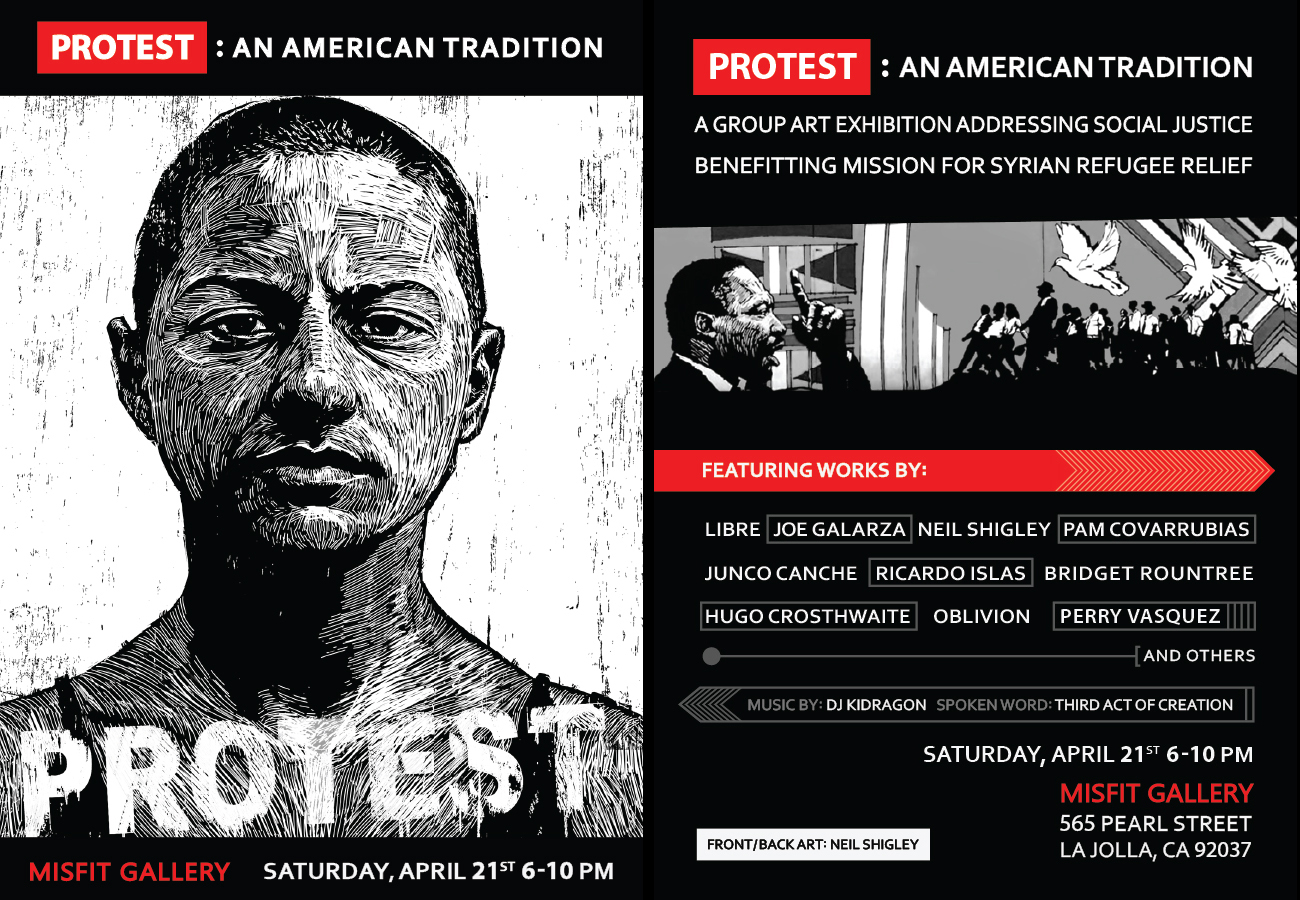



We’ve all got to make the effort to be the human beings we would like to imagine ourselves to be.

The Holocaust Survives

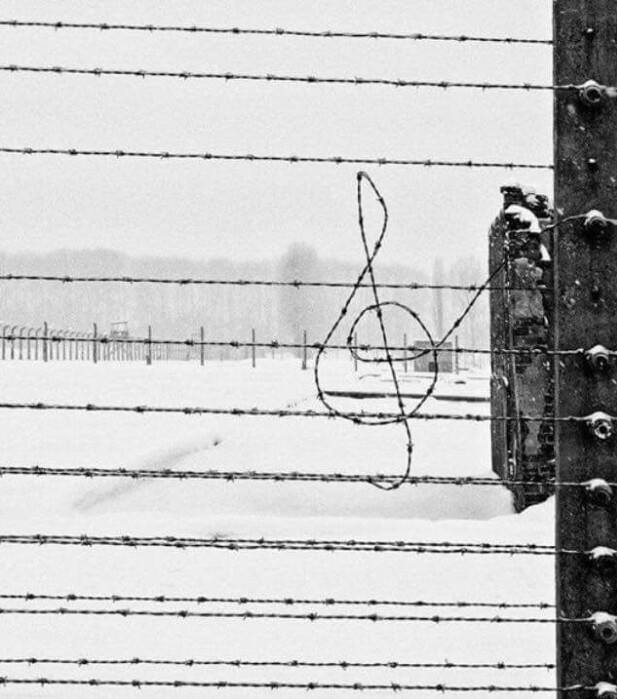 No other single event in history had more of an impact on the 20th century and by consequence the present 21st, than the mass brutalisation of families or men, women and children in the camps and now in the Syrian refugee camps in Lebanon.
No other single event in history had more of an impact on the 20th century and by consequence the present 21st, than the mass brutalisation of families or men, women and children in the camps and now in the Syrian refugee camps in Lebanon.
L’Chaim
Master of Puzzles
By Igor Goldkind
Ivan Moscovich has created more brain-teasers than most people have solved crosswords. Igor Goldkind set out to piece together his fascinating and harrowing life.
Ivan Moscovich has his life’s work wrapped up in a bundle of about 10,000 pages of A4 paper. On those pages there are some 5,000 separate puzzles, puzzles that range from the hang-on-let’s-look-OK-I-see to beyond the fiendish. Some are variations on themes, some utter one-offs. Some are to be made on paper or card, some are designs for tricky little – or big – devices. Moscovich calls them the S.A.M. archive – science, art and mathematics. The puzzles use the techniques of bafflement to teach, and they use beauty to bemuse.
Moscovich has been making puzzles since the 1960s. Now, at the age of 70, he’s looking to transform that life’s work into new formats. He and his colleagues have started up a new company to take the ideas on those 10,000 pages and put them to work in the digital arena. Moscovich is sure that there is room for them. Having looked with interest at hits like Seventh Guest, which friends told him were bringing new life to the world of puzzles, he was profoundly unimpressed. The puzzles were hard, sure (if you weren’t Moscovich, that is), but they were variations on a small number of underlying tricks, and they didn’t add up to more than just a set of puzzles. Moscovich thought that he – or people mining his archives in digital form – could do better.
“In digital media you can build overlapping linear trees, using the media to interrelate the concepts for the user. It’s important with any problem to see – at the same time – the different paths that can take you to a solution. Certainly this is the best way to explain scientific and mathematical concepts.” The collection of puzzles becomes a sort of puzzle itself: a maze, something to find one’s way through, something more than the sum of its parts.
Ivan is looking forward to trying to put all this into practice – not least because he enjoys the attitude of the people he’ll be working with. The way that games designers and programmers think fits into his world perfectly. He loves to be with people who are bored when they’re not trying something new, even impossible, when they’re not seeking a new solution. And he can make sense of himself by being part of a group; in fact, it has saved his life before now.
Ivan likes people who try to make sense of the pieces. That, in part, is how he got into puzzles – his delight in their ability to teach eager minds. As well as making puzzles for books and toys, he has used them as serious teaching tools for engineers – and pioneered the art of transforming the counterintuitive insights of puzzling into science museums with interactive displays. Putting together the pieces of an idea is much more important than putting together the pieces of a puzzle. The wonder is that by getting someone to do the latter, you can let them do the former.
A life in fragments
Moscovich’s own life is a bewildering array of puzzle fragments. Having met him on a CD-ROM project and learned some of his history, I started to wonder how to reassemble the fragments – and what they could be made into. One of the answers is a charming, brilliant septuagenarian. Another is 10,000 pages of A4. And a third might be a technological passage through the 20th century, from the industrialisation of death to the pursuit of pleasure. A journey that charts the territory of the 20th century’s technological revolutions and its human upheavals, from the Balkans to California, from museums to the Israeli defence industry, from the ruins of Austro-Hungary to the digital age, from railways to death camps.Moscovich’s parents were Hungarian, but he was born in Novi Sad, a small Serbian town. He still retains a central European accent that, to my ears (and probably to yours) sounds like the definitive voice of modern science and mathematics. “My father was a Hungarian who escaped from Hungary into Yugoslavia after the First World War. He was a painter by profession, but in order to make a living at that time he opened a photographic studio which became very successful. He named his studio Photo Ivan, after me.”
His description of an everyday childhood in Novi Sad paints a familiar
portrait of a middle-class craftsman’s family, complete with Yiddish grandmother and old-world family meals – and none of the hothouse intellectual atmosphere that produced Leo Szilard, John von Neumann, Kurt Gödel and other thinkers who left Budapest to dominate 19th-century thought. There was little to suggest Ivan’s strengths in science or mathematics – except, perhaps, a boyish infatuation with model aeroplane kits. He had, however, inherited from his father an inclination for drawing, and his father’s habit of tinkering with various gadgets – including an early air brush – to enhance his pictures was a constant delight to Ivan.
But when he reached technical high school, Ivan fell under the influence of a mathematics teacher given to explaining the precepts of science by means of science fiction. Ivan’s teacher opened up the world of mathematics by making problem solving fun. Ivan was entranced by the maths – and, later, showed that he had learned the method, too: rigorous scientific thinking through the lens of art and storytelling.
By then, though, the Hungarian fascists had invaded. They met with little resistance. And, soon afterwards, they took Ivan’s father from him. “Before they took him, he asked a Hungarian officer if he could say goodbye to my mother and in their final embrace he slipped this ring onto her finger.” Ivan holds up his hand and shows me an ornate gold band studded with eight small diamonds. It is the only surviving memento of Ivan’s youth; everything else was lost in the Holocaust. Ivan’s father joined 6,000 Jews and 4,000 Serbs executed en masse and thrown beneath the ice of the frozen Danube. All in one day.
Ivan continued his studies until the end of 1943, when the Hungarians “got cold feet” and the Germans invaded. “We really didn’t have any knowledge of what was happening in Poland in the ghettos or with the Nazis. We all hated the Hungarian fascists, but I still knew and liked Germans and, you know, communications were very different then; telephones didn’t work internationally. We were really disconnected from the rest of the world.”
When a Hungarian Jew escaped from Auschwitz and fled to Budapest to warn the Jewish community of the death camps, few believed him. So Ivan Moscovich was deported to Auschwitz at the age of 17.
“It meant stepping out of one world into another one. I was sent with my grandfather, my grandmother and my mother. When we arrived, my grandparents were immediately taken to the crematoria. My mother stayed in Auschwitz the whole time. After three or four weeks I was taken out of Auschwitz into one of the surrounding work camps. Young people were sent to work. I worked at laying rail lines.” The Nazi system was to provide rations for six months survival, after which the workers were supposed to starve to death in order to make room for new inmates. The meticulousness by which the operation was organised was not lost on Ivan. Nor would the memory escape him when two years later he found himself again working on train rails.
By that time he and, miraculously, his mother were back in Novi Sad. An acquaintance in the Ministry of Transport offered him a research position in the effort to repair Yugoslavia’s war-torn railway system. The post involved testing an enormous German machine that used high electrical wattage to weld rail lines together, a then untested invention. Mounted on a train carriage, Ivan travelled with the machine throughout Yugoslavia, in charge of the welding team. The machine was so successful that Ivan soon found himself elevated to a lofty position within Tito’s Ministry of Transport, accountable only to the deputy minister himself.
“There I was, a simple technician, at the age of 20, and I had all this power and no boss, really. People thought I was a top-shot communist because everybody had to do exactly what I wanted. The project became more and more successful, our production was way up and I was given orders to enlist more and more technicians for my team. One day I was called in by the deputy minister and was told that in order to create a 24-hour work shift, I was to take on 50 German prisoners of war.”
So, two years after surviving the German work camps, he was given control over a work team comprising high ranking German officers and regular soldiers, some Wehrmacht, some SS. He could have done anything he wanted. He could have shot them all and easily justified his actions to the authorities. He could have tortured them to death with gruelling work. He could have snapped his fingers and made them all disappear. But Ivan Moscovich had responsibilities, a quota to fill and a marvellous welding contraption to keep running.
“I had ten kilometres of rails to get out that week and it was a real dilemma whether to screw the Germans or to try to get the best output from them. I decided to increase their rations to get more work out of them, and sure enough they were grateful and worked even harder, which increased the output. I was very, very tough with them and I think they were scared of me. But I never revealed to them that I was a camp survivor. They worked for six months and then Tito released the prisoners.”
As it happens, Moscovich only worked on the German railways for six months. “I was lucky for the first six months. It was very important for survival in the camps to be with your people, your clan of friends and family;
it made life easier. You couldn’t get ill, because that meant execution, but curiously, if you could show a work-related injury, a visible wound, you could be seen by the SS and granted a day or two of hospital. One day I announced myself with a bad wound. While everyone else went on work detail I was left in the enormous courtyard with a broom to clean up, completely by myself. Suddenly the gate opened and a commandant’s car stormed into the courtyard and headed straight for me. The German officer jumped down from his car, grabbed me by the scruff of the neck, threw me onto the platform of the vehicle and drove off. I was kidnapped.” Later Ivan learned that there had been an escape from a neighbouring camp and the camp commandant had stolen Ivan to make up his tally of inmates. The mathematics of death had to add up.
“Up to this point all of my feelings had been one single feeling: an enormous outrage. Rage that somebody, anybody, another power, could take me away from my decisions, my everyday life, and put me in an environment where whatever happened was not under my control. I was young and maybe too strong an individualist, but it was rage that kept me alive.” In the new camp this life-sustaining anger was broken, until he discovered a distant
Hungarian cousin running the camp’s kitchens and being the “godfather” of the camp. Then he found some school friends of his father’s. For several weeks Ivan rebuilt his spirits and his body. Then the Russians pushed back the German line, and the SS made their lethal preparations for evacuating Auschwitz.
The problem to solve was – how to survive.
The Museum Man
In 1952 Ivan found a new clan – and became a leader. He set out for Israel to join his now remarried mother. On the boat to Haifa, Ivan was approached by Israeli officials interested in his skills and qualifications. The new state was hungry for skilled technicians. By the time Ivan reached Haifa he already had a position in the Ministry of Defence waiting for him. “In my group there were mainly these Yugoslav and Hungarian technicians without any training in science and mathematics. The language problem was enormous, and here was this group of technicians involved in scientific research without any basis in the field. I don’t know how it happened, but I was selected as someone who could teach the other members of the group some basic science.
My boss wanted me to instruct them outside of a formal classroom using demonstrations, models and visual means. That was really the start that put me in the direction of puzzle making.”Ivan found himself playing around with visualisations and experiments. He worked hard to come up with ways in which complex ideas could be explained visually, not so much to convey a deep academic knowledge of science and mathematics but to engender an intuitive grasp of the subjects and, most important of all, to instill the knack of problem solving needed to tackle more important scientific and technological puzzles.
By the end of the 1950s, Moscovich was creating puzzles almost all the time, and practice had revealed a rare gift for making puzzles that could be revisited, puzzles that retained a depth, an impact, even after they had been solved. “I tried to design models that were compact and effective, and in which the experiments could be repeated a number of times. This required completely original design conceptualisations. My boss, Ernst David Bergman, was the leading scientist in Israel at the time, and founder of the Weizmann Institute. He loved my work, and it was he who had the idea that some of those objects I had designed could be exhibited. That was the basis of the founding of a science museum.”
In 1959 Tel Aviv established its Museum of Science and Technology, the first of its kind in Israel. Ivan worked non-stop for two-and- a-half years converting five disused British barracks into a museum, begging and borrowing every available resource. The museum finally opened in 1964 with Ivan as its curator and director. It was the first science museum to emphasise hands-on, interactive exhibitions, and it quickly attracted international attention. His position as curator became a springboard from which to explore and express his interest in art, science and mathematics, and to do it all with the benefit of a growing international reputation.
In 1965 Frank Oppenheimer, brother of the more famous Robert, having heard of Ivan’s fantastic museum to science, visited Tel Aviv with Admiral Lewis Strauss, chairman of the US Atomic Energy Commission. The two became fast friends, sharing a childlike fascination for technology and science as well as knowledge of the darker side of machines and technology. This was four years before the opening of the Exploratorium in San Francisco, for which Oppenheimer imported many of Ivan’s installations. Some remain on exhibit to this day.
The puzzle of death
In 1944, while Oppenheimer was working with his brother on the problems of designing the first atomic bombs, Moscovich was on the death march to Bergen-Belsen. Here, too, the problem was how to survive. “Everybody said those who stayed, declaring themselves ill, would be shot. As it happens, they were liberated by the Russians two weeks later. And we walked barefoot and nearly naked through the worst winter of the century, westward to Bergen-Belsen.”At Bergen-Belsen, the last stop for the Final Solution, Ivan gave up all hope. He had been assigned to a work detail in the then still beautiful city of Hildesheim, near Hanover.
“Near where I worked was a statue of the mathematician Leibniz with beautiful writing on it.
And it was so strange that after so long in hell, I am seeing that statue. I felt I was being visited by a ghost, an image of the real world I had left behind. It was then, only then, that I remembered my previous life, my teachers, my studies of mathematics and all that. Up till then my memories had been blocked out. It’s impossible to imagine that every minute, every second of life in the camps, you were only thinking of survival; there was no room for any other thinking. But here was this beautiful statue of Leibniz that reminded me of the real world.”After two weeks working in Leibniz’s shadow, “I heard this strange noise … mmmmmmmmmmmm … that filled the air, and we suddenly realised that the sky was filled with planes. The next second everything was on fire. It was the Allied carpet bombing of Hildesheim. I saw German soldiers burning, running, and everything became chaos. I ran. After a while I stopped and looked back at the city, which was one big torch. I found myself alone in a giant field, a free man. But a free man in pyjamas, a free man with nowhere to go. I weighed 45 kilos.” Ivan turned around and started walking back to the depot. With his camp clothes, his inverted mohawk, there was nowhere to run. A German woman ran out of her house and thrust a chicken leg into his hand; she never said a word.
Recaptured, he was beaten and sent back to the camp. The dead lay in their thousands. “One barracks the Germans were using to fill with dead bodies, hundreds of dead bodies. After work one evening, I decided that instead of going back to our sleeping area that I would crawl to the top of this mountain of bodies and find myself a horizontal place. There was a slot at the top where I could see what was happening outside. I slept there for five, six days; I don’t have any notion about how much time passed. It was bliss to sleep; quiet and beautiful. It was no problem sleeping on a bed of a hundred dead bodies. Otherwise, I wouldn’t have lasted.
“One day I awoke from my sleep to complete silence. I looked through the slot to see the camp was completely deserted. Suddenly through the main entrance, which I had in my view, drove a single jeep with four English officers that stopped in the middle of the square. I rolled down the hill of bodies like a log and then I felt like I was running but I must have been moving very, very slowly. I was, I think, one of the very first to reach the jeep, and you know those guys were looking at us like they were seeing aliens for the very first time. Like first contact.” He collapsed into the arms of an English officer.
Moscovich was deathly ill. By the time that English officer caught up with him again, in a local hospital, he looked unlikely to survive. So the officer found a German doctor and frog-marched him to Ivan’s bedside. The Englishman pointed his revolver at the terrified doctor’s head and said, “If this patient dies here, you die here.”
Ivan Moscovich did not die – nor, at that point, did the German doctor. Ivan was transferred to a Red Cross hospital in a small town in Sweden – a town so boring, he now swears, that the local newspaper actually ran daily updates on Ivan’s weight gain for lack of more interesting scoops. Ivan describes his slow recovery as matter-of-factly as everything else.
“At a certain moment you know, the organism decided,
‘OK, we’re going to stay in this world. ”
Toy story
In the mid-1960s, as his fame grew in Israel and beyond, another new world opened for Ivan Moscovich. “I was working on a puzzle at my desk one day when one of the ushers came in and said a couple of tourists wanted to see me. I was busy and didn’t have the time. The usher came back and said they only want five minutes of your time and they wouldn’t give up. So I agreed to see them, Mr and Mrs Eliot Handler. I wasn’t very enthusiastic but we talked and then Mrs Handler said ‘I would like our chaps in California to see your puzzles; are you ready to come over to California?’
I didn’t take them very seriously. Two weeks later I received a call from a travel agent who had a ticket waiting for me to go to California to visit Mattel.”Eliot and Ruth Handler founded and owned Mattel Toys. Its twelve-storey building in Hawthorne was the centre of America’s toy industry. Sales of their Barbie dolls were colossal, but the Handlers were keen to expand the Mattel range beyond just dolls. When Ivan came out to visit them they immediately offered him a three-year open contract to create games and puzzles for US$25,000 (£16,000) a year. His “Brain Drain” puzzle game promptly sold a million copies worldwide. This success was repeated with a series of puzzles including “Play It Again Fun”, “Visual Brainstorms”, “The Brain Power Decathlon” and “The Hinge”. Soon toy and games manufacturers from Japan to Europe were clamouring for more and more puzzles from the master. Ivan Moscovich’s gift had found the most widespread of all its expressions.
Fitting together the pieces
Somehow, all these pieces add together to produce a remarkably creative man, and one with a unique vantage point. Ivan has seen countries destroyed, reconstructed and created afresh. He has faced the most utterly depersonalising totalitarianism ever attempted, and rejoiced in the individual quirkiness of children’s imaginations. At an age where most seek nothing new at all, he is embracing the digital world with the enthusiasm of a seven-year-old offered a Game Boy.
How does he see the end of the century?
“At present we are in a greater need for a fresh creative spirit than in any other period of human history. Less and less experience is being gained directly through activities. Sensations tend to reach us increasingly only after passing through layers of media filters. Children manipulate electronic gadgets and play with computers, which is all very well, but ultimately lacks perspicuity and full sensual enrichment.
I hope to create open-ended concepts that trigger chain reactions. Ideally, the player plays my game, solves the problems and is motivated to invent his or her own variations of rules, ultimately creating his or her own games, puzzles and aesthetic structures.”He has an avowed predilection for the physical. You can see it in his hands as he solves his puzzles. But Ivan sees unique possibilities in the digital world, possibilities that flow from the nature of his puzzles. “I’ve already published several books of my puzzles, but in a book you are restricted to the lin- ear progression of page after page, without much freedom. To interrelate the conceptual links between problems and solutions you need to be able to cross reference non-linearly, which is what a CD-ROM does.” After all, this is the point of his S.A.M. archive – that it combines science, art and mathematics as different paths to the same goal. The trajectories can be changed forever; the solutions will still provide the improvements of the self that Moscovich cares about.
“You know, humanity has been defined in various ways. For instance, as Homo habilis, skilful man; as Homo sapiens, wise man. I prefer Homo ludens, playful man, as the best definition of modern 20th-century human beings.” It was a hopeful definition that Johan Huizinga came up with in the late ’30s, at the time that young Ivan was learning science through science fiction – but the hope was serious and fearful. Huizinga was quite aware that playfulness had its dangerous side, and that the coming war would be a great, dark game; it was peace, he always said, that was the serious business.
These days, Ivan Moscovich is at peace. He lives a quiet life with his wife Anitta in west London. Within him, though, you can sense the machines within machines working, a vast inner factory of the abstract. It is hard to imagine him without them – even in the worst places the century’s history has to offer. I asked him whether his puzzling mind had helped him in Auschwitz, in Belsen; whether he had made his retreat into a private world of abstraction and pure thought.
“No. You know, it’s very difficult to explain, to understand. All of your time, all of your energy, all of your thinking is just focused on one thing: surviving.”
He did. And from the simple fact of survival he has pulled together the fragments of his life into a living inspiration for the rest of us – a puzzle worth thinking about.
Igor Goldkind writes science fiction, comics and essays, and lectures on technology and culture.
If you are concerned with the Syrian refugee crisis, the largest forced mass emigration of refugees since the Jews escaped Germany and Poland, there is something you can do. Inform your self through the Syrian American Medical Society who are running projects and providing medical supplies to the victims of the dictator Assad’s brutal and genocidal war against his own people.
Participate, if you live in southern California by attending a special exhibition of protest art at The Misfit Gallery in La Jolla California on April 21st.,
@ 565 Pearl Street. 92037 6-10 pm
I will be reading my published and unpublished work in the Spoken Word progamme as well as performing with The Third Act of Creation. But there’s much, much more. It’s a celebration of human rights and protest art to raise money for SAMS and also to join others in Mindful Resistance to the tyranny, bigotry and corruption in our present government and around the world. WE are THE PEOPLE, so instead of just complaining or getting depressed,
Let’s do something!


“We confuse the world as talked about, described, and measured with the world which actually is. We are sick with a fascination for the useful tools of names, of symbols, signs, conceptions, ideas and numbers.” ~ Alan Watts

The Numbers Game
In the end, it was the numbers that did us in.
They lined us up into military rows
And assigned us all numbers
One after one after one after one after one….
How many, nobody knows.
You see, it’s a numbers game
It’s all the same
You’re not your name
You’re your numbers.
Let me explain how it’s done,
And how this game can never be won.
See, there are good numbers and bad numbers
High numbers and sad numbers.
Sometimes high numbers are good and low numbers are bad
And sometimes low numbers are good and high numbers are sad.
It all depends on who is counting.
Not you or me
Not the numbers either.
They don’t know, they’re just numbers after all.
Although…
The numbers are counting on each other.
Just not you or me
Because we will never be free
Of Big Numbers and small numbers,
Negative numbers and imaginary numbers,
You see, it’s a numbers game.
It’s all the same
You’re not your name
You’re your numbers.
Let me explain
How it’s done.
And how this game can never be won.
 Prisoner number…
Prisoner number…
Credit Score number
GPA number
SAT Number
Zip code number
Blood pressure number
Heart rate number
DOB & TOD numbers
House number
Gas number
Phone number
Electricity number
Room number
Water number
Dog tags number
Social Security number
Bank account number
Table number
Sibling number
Temperature number
Flight number
License number
Vehicle registration number
Alcohol level number
Height, weight and age number
I hear you scream:
“I’m not a number, I’m a human being!!”
Sure you are,
Now take a number.
It’s for your own protection
There’s safety in numbers.
Numbers can answer all of your questions:
How far, how long, how deep, how high, how many,
How often?
Just not ‘how come’?
Anyone can count,
But you can’t count on anyone.
See, it’s a numbers game
That can’t be won
It’s a numbers game
It’s just how it’s done.
It’s all the same.
You’re not your name
You’re your numbers.
Now count to ten
And start all over again.
For Rob Thompson who asked me if Numbers occupy Space.
These Curious Hands


These Curious Hands
The world is not a mystery, my friends.
It is an enigma waiting to be unwrapped from its riddle
A safe anticipating its own combination.
To open and reveal what has been safely locked away since before time Began.
The puzzle patiently poised for its pieces to coincide
With your hands.
To fill the gaps they were carefully carved to fit.
Together.
The question is not who made the world we each live in
The question is who made the hands that fit the world together,
In anticipation of our futile and yet eternal curiosity.


Victory is Ailing but Still Not Defeated!


This blog is now my sole cognitive link to the outside world.
At least today it is.
I can’t physically be where I need to be so I’m posting here thinking that if enough people read my status, that it somehow puts me in the real world of social transactions and mini Games of Thrones.
Victory is not defeated but ailing.
I put my black steel steed in the hands of Spencer, the young mechanic who plays my Sancho Panza in this story. He’s humble because all of Victory’s afflictions are his fault. But I don’t rub it in.
“Sancho,” I say. “There’s no point in wasting time in pointing fingers. It’s never really just one cause, usually a combination of factors. I’m just glad that you’re willing to drive out here at 7 in the morning to take a look”.
I help Sancho Panza push my bike up into the back of his truck.
One good reason I’ve found for being nice (or civil, as I used to call it), is because so few people really are. Oh, they want to be taken for nice people alright; and would be highly distressed to find that others might think otherwise. Being nice provides a tactical advantage.
Although, I liked Spencer the young bike mechanic. An engineer in practice if not in credentials. My bike is first up this morning so if it can be fixed, it will be fixed in time for me to hit the 5 for San Diego and the Pancakes and Booze Art Market where I’m exhibiting some of my mother’s works for sale right next to Mario Torero. Sell some watercolours, some pastels and loads of books I hope.
I enjoy the role of an “art-barker”.
It feels like an honest effort for very little pay; however, the rewards are luxurious.
There are so many jobs that aren’t so and so many professions that once were and have since gone astray into the mercenary end of pure commercial exploitation. Marketing people use the term ‘exploitation’ to refer to the product they’re peddling but what they really mean is the market they want to buy it.
“Don’t say you support the arts, buy some!” is my shill.
So if my Victory is assured and returned to me by 3, I will make my way south on the 5 lane asphalt ribbon to the City on the Bay.
Last night I missed the ceremony for the official induction of 3 copies of IS SHE AVAILABLE? into the central library’s local author collection. Not just me, but that of my historic friend Chris Ernest Nelson, as well. His book Harvest lying right next to IS SHE? in a glass case.
Just like William Blake at the British Library when it used to be a separate building from the British Museum. And Joe Orton’s mutilated library books for which he spent prison time inside, now under glass inside the Islington Library in London, the very library he stole them from in the first place. In England, they put both the author and the work behind glass. In England, people go to jail for unpaid library fines. And mutilating books into art collages.
So I missed by success at convincing the library to take my book which they rejected at least twice. Once because it didn’t fit into their category system, the second because of Michael S Kane‘s Andy Warhol/Jack Kirby Madonna and child. But no child, just Mother Mary nurturing a revolver.
It’s been the image that has caused the most alarm and offence amongst bookstores, book buyers and of course libraries. I have been closing high order deals with chains on more than one occasion, only to have the buyer happen to land on Shaky’s spread and immediately handing my book back to me. Atta-boy Shaky, I’m living on desperation row thanks to you!
 The irony is that our intention from the beginning was to apparently offend. There is nothing specifically offensive or pornographic about the image of a pre-pubescent blond girl holding a big pink gun. Not even the word ‘Vagina’ standing out in Rian Hughes‘s sculptural typography of the text to the poem.
The irony is that our intention from the beginning was to apparently offend. There is nothing specifically offensive or pornographic about the image of a pre-pubescent blond girl holding a big pink gun. Not even the word ‘Vagina’ standing out in Rian Hughes‘s sculptural typography of the text to the poem.
In fact, there’s nothing offensive or shocking about the image at all, just the impression that one will be shocked. And of course, the real content, the real meaning of the poem and the illustration is that gun-violence is what we should really be offended and shocked by and yet are no longer. Judge for yourself below.
At any rate, I am home alone; sound but unsafe, calmly nervous by events beyond my control that are inevitably unfolding. G/d will pretend, when the time comes, that the end of the world was what he had planned all along.
Everybody improvises their intentions.
Just wait and see.
Nobody Talks to Me Anymore

Has been entered int the Realistic Poetry Contest and thus is no longer available on my blog as it is defined as non-exclusive or previous publication by the contest rules.
Who knows, I may even win.
Either way, it returns once the contest is over in February
Tune In.

Speculative Realism: What It Means, What It Is and Why You Need to Know About It
Charlie Brooker’s Black Mirror is really the best TV on your screen. It quite literally holds up a black mirror not just onto our society but to each one of us as components, now data-cogs, of the society we can no longer see anymore without the aid of mirrors. We are like goldfish in a goldfish bowl kept rotating by the shortness of our attention spans and never even realising the wetness of our environments.
Charlie Brooker, his cast, co-writers and the producers at Netflix are doing us the moral service of reminding us of the remnants of own moral outrage and how our own ethical boundaries have long since been trespassed by the dark consequences of convenience and more efficient processing.
The machines never took over, we just surrendered.
 We are like commuters stuck in traffic complaining about the traffic that we are actually both part of and complicit in. Even though from our subjective vehicles, we cannot see it. Traffic controllers retain the power however it is a remote distributed, bureaucratic, systemised power that is no longer subject to one human’s judgement. Who do you alert when the traffic lights stop working? You don’t have to, they already know.
We are like commuters stuck in traffic complaining about the traffic that we are actually both part of and complicit in. Even though from our subjective vehicles, we cannot see it. Traffic controllers retain the power however it is a remote distributed, bureaucratic, systemised power that is no longer subject to one human’s judgement. Who do you alert when the traffic lights stop working? You don’t have to, they already know.
I have as of late, paraded the term Speculative Realism, borrowed from the French post-idealists. Who understand that the only way to view ourselves clearly is no longer as mere individuals but as components of a larger neuro-ecology that contains, constraints and ultimately defines us. We are the furniture that a system beyond our own subjectivity keeps rearranging “on our behalf”, “for our own safety”. “for your security”.
I have only slightly re-engineered the term in the context of a literary genre, of storytelling, perhaps the sole remaining respite of human freedom. A story is a purely human phenomenon untainted by machine efficiency as machines don’t need to tell each other stories. But we do, and in doing so we may be flexing the last quiescent muscle of our humanity. A story is comprised up 3 interlocked elements: The storyteller, the story and the audience (or to whom the story is told). At least two of these components are human, subject and object; the rest is merely synaptic grammar. 
When a story is told and heard, a condensed complex of information, human knowledge and near spiritual wisdom is transmitted in a compact instant well beyond the speed or circuitry of a microchip. Remember, we are the minds that created and defined data. It is that creative mind that is both alert and receptive to the information that is vital to our survival, as a species and as sane human beings. Storytelling is our salvation and Poetry is better than prayer because you don’t have to pretend that someone is listening.
Speculative Realism is just my tag for vital, survival information being conveyed by storytellers. As essential as where the next herd of buffalo might be. Speculative Fiction has here to provide the luxurious canvas for our imaginations to ponder possibilities. But Speculative Realism is not what you might do ‘if…’ but what you will have to do ‘when…’ To survive, to retain your own identity and perhaps even your sanity. Speculative Realism is imperative, it carries the mental equipment we need to survive.
 Black Mirror is a series of short cameos of Speculative Realism. The term is beginning to gain traction since I first observed the emergence of this genre in film, fiction and screen entertainment. I have since read a reference to Neil Gaiman‘s work described as Speculative Realist in his use of double vision, (the seeing of two apparent contractions as one), in his characterisations. I don’t know if he thinks that, you’d have to ask him.
Black Mirror is a series of short cameos of Speculative Realism. The term is beginning to gain traction since I first observed the emergence of this genre in film, fiction and screen entertainment. I have since read a reference to Neil Gaiman‘s work described as Speculative Realist in his use of double vision, (the seeing of two apparent contractions as one), in his characterisations. I don’t know if he thinks that, you’d have to ask him.
Cyberpunk auteur Bruce Sterling, in Wired, refers to Speculative Realism as Philosophy Fiction, which is as good a handle as any because Speculative Realism defends the autonomy of the world from human access in a spirit of imaginative audacity.
In his recent Edinburgh University Press publication Speculative Realism and Science Fiction, Brian Willemsuses a range of science fiction literature that questions anthropomorphism to develop the Speculative Realist position. He looks at how nonsense and sense exist together in science fiction, the way in which language is not a guarantee of personhood, the role of vision in identity formation and the differences between metamorphosis and modulation.
 These are useful critical and academic insights. But the real meat is in the eating and Black Mirror takes you to the centre of the Speculative Realist banquet, piling your plate high with outrage, moral panic and cautionary tales of horror. I suggest tasting a sample as we’re all going to be eating from this same table for the very foreseeable future,
These are useful critical and academic insights. But the real meat is in the eating and Black Mirror takes you to the centre of the Speculative Realist banquet, piling your plate high with outrage, moral panic and cautionary tales of horror. I suggest tasting a sample as we’re all going to be eating from this same table for the very foreseeable future,
the future that has already arrived.
© Igor Goldkind 2016
A Drinking Song: The Ghosts of Christmas Past and Present

Last night was kind of my XXXmas eve, being a Saturday night, with no ghosts to placate until Monday morning. So I took my Victory out for a long ride, 46 miles down to Chula Vista to drop in on my drunken-angel-poet-brothers Alex Bosworth and Chris Vannoy. As I told them, I’ve never stopped in Chula Vista before, only passed through it; well on my way to crossing the border between Mexico and Madness.
Back in the Beatnik Days, when America was still a Great Shining Beacon of Golden Intentions and jail-breaking freedoms, going south of the border was a euphemism for leaving the straight rational world and exploring the psychedelic corridors and hallways of the unconscious mind, where the muses played poker to the sound of Gabriel’s saxophone under a streetlamp, playing for spare change, playing for the end of time. Kesey, Cassidy, Timothy Leary had all spent time south of the border, hiding from the authority.
But I wasn’t going all the way south or crossing any borders. Instead, like a Boddhisatva practising the discipline of worldly compassion, I was riding south on the great American highway stopping just short of going over the edge. Stopping long enough for the rest of my sentient species to hop on board and cross over with me. How long I gotta wait? The blur of the wind in my eyes transforms Inter-state 5 into a two-lane river of white headlight diamonds on one end heading towards but past me and on the other end, a torrent of glistening rubies speeding with me, flowing around me, carrying me forwards in one high speed direction.
I was carried on a slipstream of glistening rubies last night. Chilled legs wrapped around my angel in flight, carrying me aloft above all thought, beyond all hesitation, in that dangerous living moment when every half second of thought is solid and real with consequence; and any distraction is a trap door thumping open under the hangman’s rope.
That is the fury of mediation. That is my arrival in this moment that we all share. The calm at the center of chaos. Join me, dear reader, at the centre of chaos.
So I’m heading south armed with an unopened bottle of rye, the spirit of the season travels with me. Good whisky is about as spiritual as I get these days. It is my usual Xmas tradition to grab a bottle of good booze and head down to the Greyhound station, or the street corner, outside a homeless shelter or an alleyway or anywhere I can find and join a cluster of the disaffected, the homeless, the pointless, the ones left out of family portraits. Just to share a drink, a joke and the dregs of our mutual humanity.
But this year, not particularly in contrast, I’ve chosen the company of Deadbeat poets, failed self-construction workers, mental hospital misfits, suicide skippers and gravel-voiced prophets capable of predicting the present with uncanny accuracy. Cassandra’s children muttering under their condensed breaths, scratching their prophecies from the oracle down for the benefit of anyone who still remembers how to read; or how to listen. Tonight these are my brothers (and sisters), in arms. Raging against a sea of struggles, believing that by opposing them, we will end them and wrap our soiled blankets of peace around this cold, shivering world’s shoulders.
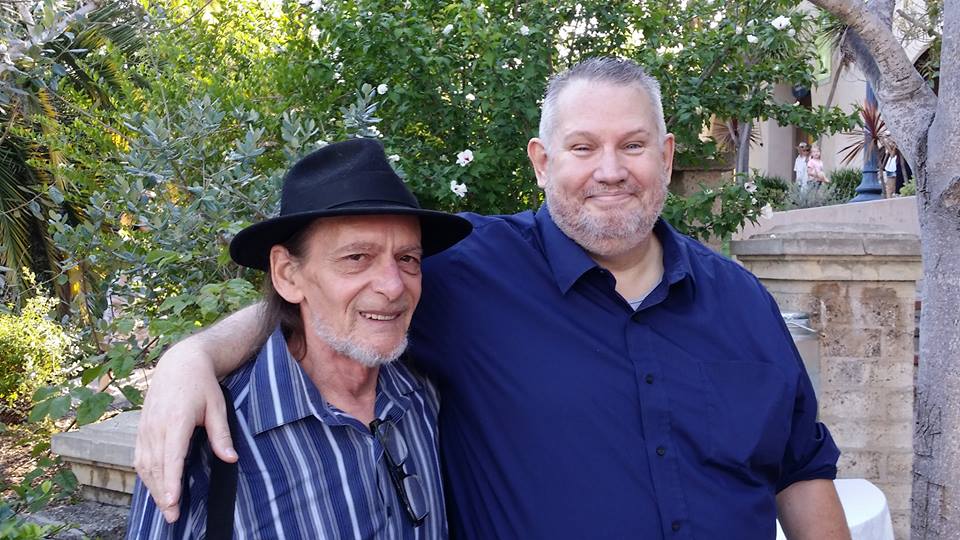
Dead Beat Poets
I make it to Main Street much too early and agree to meet my comrades in a bar called Sanctum. I have no currency apart from my still untried bottle of rye so I stand outside on the pavement near but not too near two young women smoking butts and laughing. ‘Merry Xmas’, I venture.
‘Merry fucking Xmas to you too’, is their reply. So I listen. A skill I am still mastering. The raven-haired beauty of the pair is recounting her love life to her friend. Telling her how she had met her intended’s eyes at work, a burning penetration in time and how happy she was that at least she knew, that she knew that she knew that there was an unstated passion, thrilling at the unstated, as yet unenacted attraction between them.
The bittersweet anticipation of passions yearned for but still yet to come.
I wanted to tell the dark-haired young woman how lucky she was to be free to express such yearning to another woman. Jealously, I wanted her to pity my poor lame masculinity and the political mindfield I had to traverse to even come close to sharing such a pure moment of true emotion and affection. But I didn’t. Who wants to hear another pitiful man’s story anyways? This was the year of raised female voices. Voices raised in anger, in righteous retribution for all the wrongs accrued., in demand of recognition. Voices of freedom insisting on justice, insisting on equal treatment without unwanted trespass.
Poor me, poor me, pour me another drink. . . .
So instead I pulled out my weapon of virtue, my great equalizer of man and woman, my bottle of rye from my bag and asked if ‘You ladies would like a drink”. “Hell yes”. And for a brief instant, I felt just like St. Peter patrolling the earth and giving comfort to lost souls.
This murdered the time until my wordly brothers finally arrived. We poured from the bottle into bright red dixie cups, swigging them down in the parking lot before entering the warmth of Sanctum Ale House to talk poetry, performance, and what we were going to do with the rest of our lives. This was beginning to feel a lot like a rendezvous of fallen angels pausing for a drink and brief reflection before hitting Hell.

Beatnik Approved!
There was no reason to take a picture or a selfie or even take note of the time. We drank, we talked, we tried to make each other laugh and we indulged in our common humanity; a focus on what we shared more than what we didn’t.
My mind spun back in time to the many drinking conversations I had with my late great friend, the writer David Halliwell. The only man I had ever met who had got drunk with Sam Beckett. So David told this story of buying a bottle of good Irish whisky and taking the train to London, from Yorkshire. Easily a 4-hour journey. On the trip, David got nervous opened the bottle and drank half the contents on the way down arriving completely cut up the King’s Road party where San Beckett would be. He did find Beckett apparently and immediately sat down to finish the rest of the bottle he’d brought. David got so drunk he couldn’t remember a word that Sam Beckett had said to him.
Last night, I told Chris and Alex about the year that David called me up to join him for a Xmas drink and The Bull Tavern in the little North East Oxfordshire village of Charlbury, whose village council insisted on calling it a town because it had 4 pubs, a pharmacy and a post office.
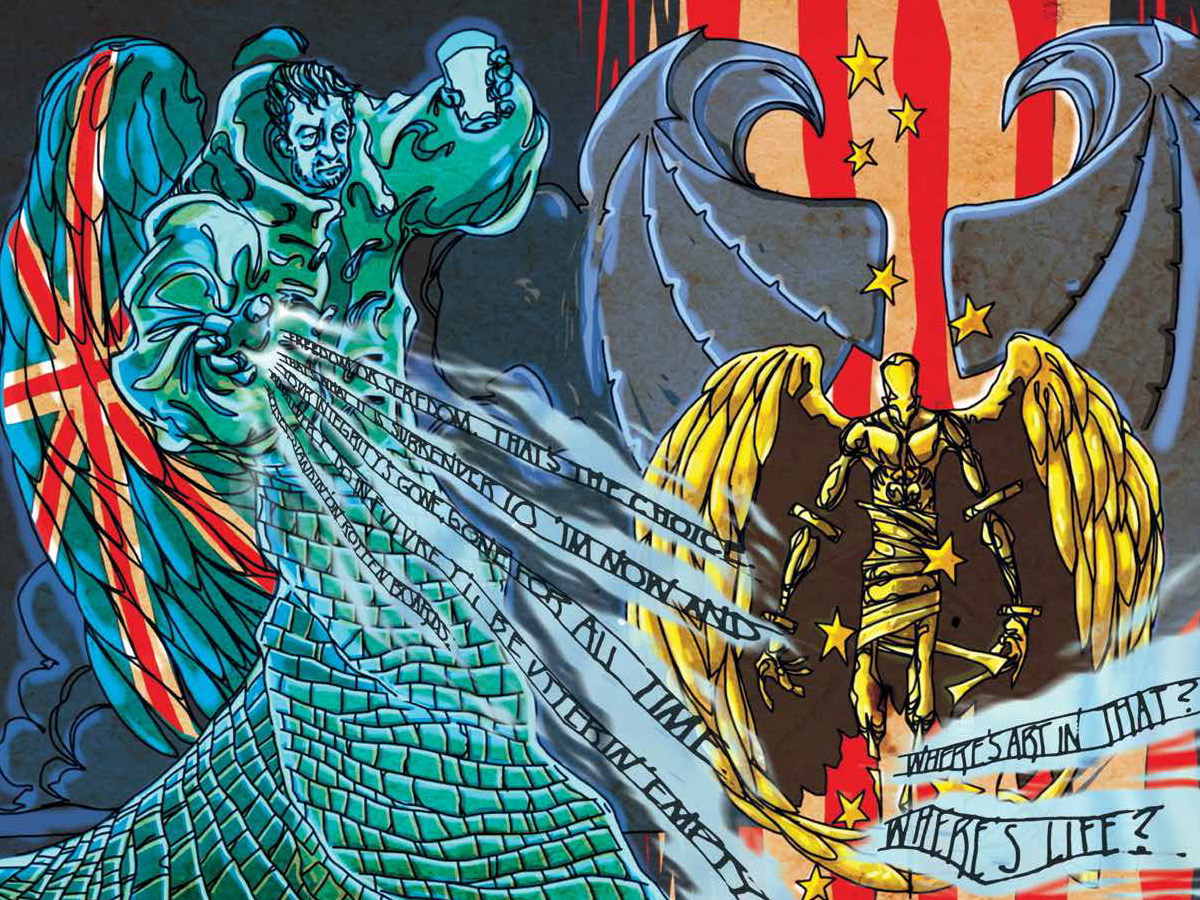
I walked down the unpaved bumpy road to the tavern, past the Egyptian cottage with the papyrus reeds of Isis, the Goddess, not the terrorists. I reached The Bull pub and Inn, Opened the heavy oak door and walked into a movie. The pub was nearly empty save for the bar that featured David on his bar stool holding court with his mates. Only his mates were images burnt on my retinas since childhood: John Hurt, Ben Kingsley, David Warner, Freddie Jones and his son, then unknown now better known than him, Toby Jones. I remember blinking in disbelief. I might as well have walked in on Lewis Carrol, Tolkien and CS Lewis downing pints all who had also frequented this pub some hundred years previously.
I remember David smiling, laughing his phlegmatic cough and motioning me over to introduce me to these faces from the screen. “This is Igor, he’s another writer; he’s a Yank but he’s alright”. I was just another writer in the company of actors, everyday workers taking a break from toiling in the star-maker factories behind the popular film. I was handed a bulbous goblet of glowing ruby wine and the rest is hard to remember. But I do recall making them laugh and David Warner towering over me and reminiscing about his one appearance in a two-part Star Trek opposite Patrick Stewart that had earned him enough to comfortably return to the stage for 7 continuous years. Apart from young Toby, these were board strutting actors; indifferent and virtually contemptuous of their movie work save for the vast sums Hollywood paid them for peddling their trade of packaged emotions.
The next year most of them would be dead, David Halliwell included. I would empty his cottage with a Scottish actor of his while his Yorkshire sister wept inconsolably on his stairwell. In England, people let you weep and leave you to the dignity of your grief out of respect for the exceptional display of emotion. If you openly weep in England its because the pain is so hard that you really can’t hold it in.
Back in the Sanctuum, I explained to my companions how David had taught me the true meaning and value of the literary arts, which for David included actors who tell stories with their faces. Storytelling’s place in the human universe, keeping the stars locked in their firmament and the cosmic spheres in perfectly balanced and meaningful rotation. David Halliwell wasn’t famous. He died a virtual pauper, alone, estranged from his sister, a Yorkshire man with an RSC accent from wanting to be an actor, who wrote every day of his life before heading down to the pub to argue with me.
But he was a great success, albeit not by any kind of American Calvinist standard. Rather he succeeded in staying true to his art. He never sold out to better-paid mediocrity. He stayed true to his art, to himself and he survived with the respect and admiration of his fellow artists. When he died, I wrote and read this eulogy at his memorial, after Harold Pinter came up from Hampstead to say a few words about his departed friend. As did Stephen Frears and Scott Hampton (author of Les Liaisons Dangereuses).
I read this poem to David to my friends Alex Bosworth and Chris Vannoylast night. And in my mind, I went hunting and visiting my own xmas ghosts to remind me of the true joys of this season.

Daedalus Afraid to Fly
David, you bastard, you’ve left me
Understanding here alone,
With only these words falling out of my hands
When it is yours I want to hear again.
Words of your mastery, not mine.
So what was all the swearing about then, David?
What were all those Northern fumes really burning from?
I told you the songs of Yorkshire would never play in LA
Or London for that matter):
Two cities equidistant from your Yorkshire mother.
Tell me, David, why didn’t you just sell out?
You could have bought yourself a much better pint of beer
With all that money for old knotted ropes and
Still, have coughed up the phlegm to laugh at us all.
Is death your idea of some kind of joke?
Did you finally track down the film rights to Malcolm, David
And cash them in?
Are you really, secretly living in Barbados,
Making beautiful women miserable?
To think of all this wasted sorrow and
Empty glasses of beer.
You did say that you always wanted to visit other places.
But Daedalus, you were afraid to fly.
If you had been born upside down in America
You would have been a southern writer living in some Northern town.
Spilling your southern drawl over a rum and coke in a New York City bar.
Sitting elbow to arm with Williams, O’Neill, Baldwin and them all.
Your America was always an America of the mind.
So why fear the flight?
Your America David was where Charlie Parker
was forever sharp shooting pool with Humphrey Bogart
in some room behind a neon-splattered bar
Where Chet Baker never jumped or fell but flew, man!
He just flew away.
Just like you.
So you’re off then, David?
Back up the bumpy road,
Turning the corner around the Little Egyptian cottage
Navigating the reeds of Isis, Long past the close of time.
A brown duffle coat ship, bobbing on an unpaved surface,
Weaving a few well-spoken thoughts into your
Captain’s cap.
Can you tell me, David:
Were you X-Centric, or
Merely Eggs Essential?
How about this time I tell you, David:
The spark was always there.
But not like Daedalus, like Prometheus.
The living punishment of Truth,
Chained to your bar stool,
That eternal pint of Carlsberg lager gnawing at your liver.
Like Prometheus David,
The spark is always here.
For the late, great David Halliwell; poet, playwright,
author of Malcolm’s Struggle Against the Eunuchs.
I can only miss you when you’re gone.
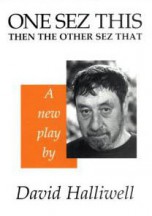
Mysticism: The Phenomenology of Truth

Science makes no philosophical claim to ‘Truth’ but instead provides useful approximations based on its ongoing peer-review methodology. What is reliable  information by way of science is the result of similar enough results from replicated experiments that are strictly controlled and abide by the parameters established by a long succession of scientists. Their hand-me-down story is called epistemology.
information by way of science is the result of similar enough results from replicated experiments that are strictly controlled and abide by the parameters established by a long succession of scientists. Their hand-me-down story is called epistemology.
In the end, all it tells us is that under such and such of circumstances, it is most likely that these results will be achieved regardless of who you are or where you are as long as you abide by the parameters of the experiment. This consistency of results is what allows us to make engineering choices based on scientific ‘truths’.
When people say they believe in scientific ‘fact’, they usually mean engineering applications of the science. No one bothers to question the science behind the combustion engine as long as their car runs reliably.
But the key phrase here is ‘approximations of truth’. More absolute truths, the understanding of ourselves and the objects in themselves requires a different kind of perspective outside of the scientific framework; one that takes the observer and the point of observation into account in the observation.
This involves a separate methodology as structured as scientific methods but with different aims and thus different kinds of conclusions. The overlooked discipline is that of Phenomenology, coined by the mathematical genius turned philosopher and teacher of the great Martin Heidegger, Edmund Husserl.

Husserl believed that our understanding of phenomena was completely based on our disposition towards the apperception (or the incorporation of our perceptions into our existing body of knowledge i.e. our understanding of the perception). Although a mathematician, this view of truth being determined by the perception of the observer as much as the thing-in-itself which can never be truly perceived apart from its set of traits and characteristics is a natural extension of Kant’s Idealism, for which Time and Space are far from objective physical phenomena and more akin to categories of perception. In effect, shared psychological states of awareness.
This is precisely where Phenomenology collides with post-Modernism, Einsteinian physics (Relativity) and Freudian mapping of the unconscious (everything that we don’t know or did know but forgot).
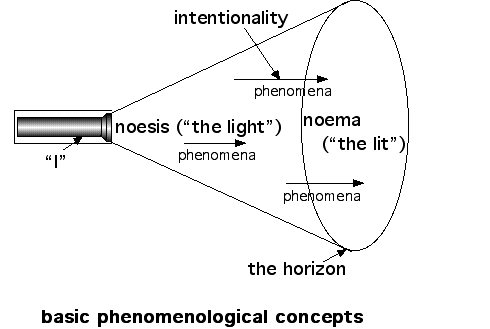
This post-modern relativism owes a great deal to the mystical and alchemic traditions to which it shares a common ancestry with science. Science, after all, derived from mystical and alchemic experimentations by mainly monks who upon separating from the spiritualism of the Church, (thanks to that first and great secular martyr, Giordano Bruno), continued their quest for god’s Truth.
Mysticism (unlike Spiritualism), is not superstitious; rather it engages with the world in pursuit of solving mysteries unknown and unsolvable by science. Mysticism poses questions science would never bother to ask and then attempts to answer them. Metaphysical questions such as ‘Who am I’ outside of my name and a social construct? Why am I here and who really lies behind the many masks upon mask that I wear and why do I wear them in the first place?
Psychoanalysis and Psychology at their best are not sciences at all, they are merely enquiries into the nature of the mind (although the current bias towards quantifiable conclusions might make one think otherwise). They are a result of mystical enquiries into the nature of the mind and how it shapes our most intimate and fundamental perceptions of the world we live in; the space in time we briefly occupy before dying. Medicine is yet another example of a supposed science that in fact is based on a field of knowledge that predates scientific methodology.
Nor is mathematics strictly speaking a science and yet it is by far more predictive of the unknown and unexperienced than science could ever hope to be.
I feel that this is a very relevant issue in the face of the current data-fixation of human experience as well as the current bias of valuing quantifiable truths over qualifiable ones. Just because you can count something accurately doesn’t mean you understand it better.
The truth is never in the data as such, it’s in the interpretation of the data, as long as you’re smart enough to factor in the interpreter.
I’ll take a breath now;
And recall who I am.
Paris is the City of Light

Paris is the City of Light
 Spotted by puddles of darkness &
Spotted by puddles of darkness &
Forever burning lights.
Who at first, allured us,
Then wouldn’t allow us to leave her side.
Though she may be so much older than you or I,
She was, after all my life is recalled,
My greatest lover, ever.
Please remember Paris with fond tenderness
And fire.
Essay on Everyday Zen

 I think this is the closest I can come to describing the Zen disposition. I say disposition because too much is made of practice and the philosophy of Zen when all are merely aids to assist in the unravelling of illusion and self-deception. Zen is not an acquisition of skills, rituals, garments or ideology; instead, Zen is relinquishment. It’s a reminder to keep paying attention. Not acquiring but letting go: unravelling, stripping away layers of calloused skin, leaving your baggage behind and not looking back over your shoulder. In the words of the bard:
I think this is the closest I can come to describing the Zen disposition. I say disposition because too much is made of practice and the philosophy of Zen when all are merely aids to assist in the unravelling of illusion and self-deception. Zen is not an acquisition of skills, rituals, garments or ideology; instead, Zen is relinquishment. It’s a reminder to keep paying attention. Not acquiring but letting go: unravelling, stripping away layers of calloused skin, leaving your baggage behind and not looking back over your shoulder. In the words of the bard:My toes too numb to step”.
Awareness is larger than the body.
Mirror, Mirror


The Infinite
What I see is the reflection of my eyes
In every direction that I gaze.
Two mirrors face each other
Only the dust can tell the difference.

IS SHE AVAILABLE? Get My Book and FIND OUT.

NOTHING has prepared you for This. Nothing ever will.
Because whatever is happening Now has never happened before.
This is a web-nurtured collaboration with 27 artists, sculptors and musicians from the world of Comics, Fantasy, Fine Art and Jazz, including Bill Sienkiewicz, David Lloyd, Liam Sharp, Glenn Fabry, Shaky Kane, Lars Henkel and the cutting edge sculptural typography of the highly acclaimed book designer Rian Hughes.
This illuminated book is a contemporary Dante’s Divine Comedy; a journey through the confessional landscape of a masculine identity. It uses poetry to construct a narrative that explores themes of death and loss, sex and love, and the modern American and Jewish identity design: by the UK’s eminent graphic designer, typographer, illustrator Rian Hughes.
The music is composed and produced by iconoclast, ex-Israeli, Middle-Eastern jazz virtuoso Gilad Atzmon, along with five other jazz artists.
Written by San Diego native Igor Goldkind, this illuminated book will revolutionize the way you view poetry by meshing comics, art, music and animation in a truly unique way. It uses poetry to construct a narrative that explores themes of death and loss, sex and love, and the modern American and Jewish identity. The book is available for download on the iTunes Store and Google Play, as well as in a 166 page, fully illustrated in colour hardbound edition available ORDER HERE.

The eBook edition pushes the edge of what is possible with present EPUB3 technology. It is not an App, it is a true book that marries pop art, comics, avant-garde, jazz, spoken word poetry, video and animations, and type design in a manner that we have not seen before IS SHE AVAILABLE? has the feel of an artefact from the near future – a seminal work of a new genre-fusing poetry, graphic art, music, and animation.
Sample interior pages:
IS SHE AVAILABLE? RRP is $34.95, SHIPPING INCLUDED
Educational Discount for Students and Teachers: $29.95
Both deluxe hardcover edition PLUS animated and musically scored eBook App edition of Is She Available? bundle: $39.95
Go to http://Paypal.com/issheavailable/ and place your order directly through PayPal with all Pay Pal assurances and protection.
Shipping included in orders within the US and its territories.
If you are in Britain and/or Europe, please contact my European wholesaler Fanfare Productions who will take your order and dispatch to your address the same day: stephen@fanfareuk.demon.co.uk
Reviews ? Sure We Got Reviews. Why You Wanna See Them? Be my guest.
“Igor’s “Illuminated Book” is like a new genre. It is a wonderful ekphrastic expression; a fusion of the arts.” — Poet Mel Takahara
“His collection Is She Available? has the feel of an artefact from the near future – a seminal work of a new genre-fusing poetry, graphic art, music, and animation.” —(San Diego’s) City Beat
“Is SHE Available?” is an experiment, and reading it feels more like an act of discovery… nonetheless there’s a thrill to scrolling through its pages. It’s an ambitious step toward what digital media can (and will) be.”—The Chicago Tribune
You Tube samples: https://www.youtube.com/playlist?list=PLRnmT_aE0acoowdNBvFtK_VW2OkNN2wWp
SoundCloud samples : https://soundcloud.com/igor-goldkind/sets/is-she-available-spoken-word
The 166 full colour, fully illustrated hard cover deluxe edition is available in discerning and eclectic independent bookstores everywhere. Including Fahrenheit 451 in Carlsbad, Soulscape Bookstore in Encinitas, the Upstart Crow in San Diego, Verbatim Books and Mysterious Galaxy also in San Diego, City Lights and the Cooperfields chain in Marin County and Sonoma County, amongst a growing number of independent book stores.
Order direct from PayPal and shipping is included!
https://www.paypal.me/issheavailable
Burt & Astrid

Burt and Astrid had sat down at one of the outdoor tables outside the Encinitas Cafe along the Pacific Coast Highway.
I sat down at the single table next to theirs
Burt, from his wheelchair, had noticed the bundle of books
I had dumped from my shoulder onto my breakfast table,
Startling some spoons and a left behind saucer, and remarked:
“You’re an author, aren’t you?”
“Why would you think?” was my reply.
“I don’t think, I know”.
Astrid tucked Burt’s napkin under his chin.
She was his nurse and his wife.
“Because nobody but an author would carry so many copies of the same book around”, Burt said.
“Burt used to write before he got sick”, Astrid explained.
Burt coughed long into his napkin.
“I’m sorry’, I said, just because I meant it.
Burt finished coughing and reached with his hand gesturing
To pass him my book.
I did and Burt leafed through the pages,
Feeling the clay surface of the paper with his fingers.
“You’re a poet! Very brave.”, Burt pronounced.
And then we talked about poets ancient and new.
We compared reading Rilke, Neruda, Pushkin,
and others both living and dead
I felt like I was visiting my old college roommate
Who had studied the exact same subject as me.
We spent nearly 2 hours over breakfast
Until Burt began to speak Yiddish to Astrid.
Astrid replied in kind.
The moment we shared peeled like a bell across time.
Awaking the ghosts of my ancestors.
Astrid rose from her chair to roll back Burt’s wheels
And then they just left
With my book on Burt’s lap in his chair.
Hi Igor
This is Astrid we had the pleasure to meet you my husband and I in Encinitas this summer and had a most pleasant conversation. You gifted us a copy of your book I just wanted to let you know Burt passed away August 23 We really enjoyed meeting you especially Burt….
God bless.
Astrid
The Diamond Rain
 Caught in the Diamond Rain
Caught in the Diamond Rain
Caught unawares in a diamond downpour.
When did Karma get so immediate and so personal ?
So judgment-like and familial?
When did I last escape from my room
And begin to orbit outside of time?
That vantage point that surrounds me,
Is not just this moment,
 But every moment you or I have ever lived.
But every moment you or I have ever lived.
A handful of jewels lie scattered at my feet.
Each crystal catching and tricking the light into
Reflecting each and every possible face of existence that there is,
All at once.
Each stone weighs down heavily on my stomach.
Forced downward by the sheer gravity of events.
When did I last step outside of myself again?
I am no longer there.
Or rather I am here, just not in this world.
Instead, I’m living in a different world
built on longing, solitude, and reflection.
Two mirrors face each other
One rag wipes the dust and the sweat from both our dirty faces,
Go on, reach out with your finger tips to
Caress every surface of this jewel
We call living.
Can you see over there, that distant surface we exist on?
That reflects the face of every other face.
On all the falling jewels that surround us.
THIS is what it is to be caught in the Diamond Rain.




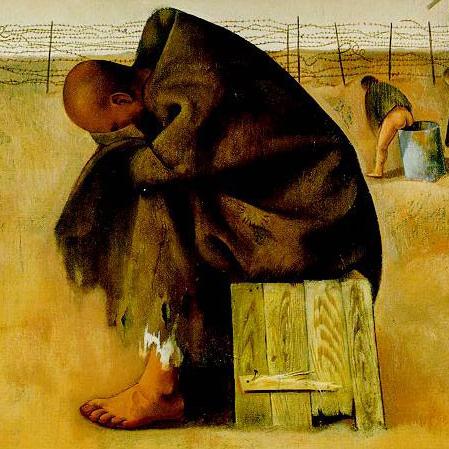


 Psychoanalysis and Psychology at their best are not sciences at all, they are merely methodical enquiries into the nature of the mind (although the current bias towards quantifiable and numerical conclusions might make one think otherwise). They are a result of mystical enquiries into the nature of the mind and how it shapes our most intimate and fundamental perceptions of the world we live in; the space in time we briefly occupy before dying. Medicine is yet another example of a supposed science that in fact is based on a field of knowledge that predates scientific methodology.
Psychoanalysis and Psychology at their best are not sciences at all, they are merely methodical enquiries into the nature of the mind (although the current bias towards quantifiable and numerical conclusions might make one think otherwise). They are a result of mystical enquiries into the nature of the mind and how it shapes our most intimate and fundamental perceptions of the world we live in; the space in time we briefly occupy before dying. Medicine is yet another example of a supposed science that in fact is based on a field of knowledge that predates scientific methodology.








 I am nurturing in the sense that I get a kick out of helping my friends, or even those I don’t know, sometimes just with honest conversation.
I am nurturing in the sense that I get a kick out of helping my friends, or even those I don’t know, sometimes just with honest conversation. 
Sleepy Mind; Awake Mind
And Zen-some!
The only way to explain Zen is by describing the sleepy mind. The sleepy mind describes a tree in terms of attributes and data: the number of leaves, the leaf shape, the number of branches, thickness of the trunk, the colour of bark. Which birds make use of the tree etc.
All these observable and measurable attributes are assembled as data by the sleepy mind and voila! the sleepy mind thinks it knows what a tree is. The sleepy mind can give arguments with citations about the validity of its data. The sleepy mind works well with other sleepy minds.
And the sleepy mind isn’t totally wrong, the data it compiles in reference to ‘tree’ are all real and quantifiable features of the tree. But no matter how exact or comprehensive, the data is not the tree nor even the experience of the tree.
The awoken mind merely says “Look, a tree”, and points.
Because there is no data that conveys the experience of that tree in the moment of your apprehension. The awoken mind, sees the leaves, the branches, the colour of the bark, the thickness of the trunk, which birds fly in and out of the tree as much and as well as the sleepy mind does.
But the awoken mind also sees that the spaces between the leaves are part of the tree. The negative space surrounding the tree. The unseen roots spread beneath the ground are part of the tree. The sunlight reflecting off the green of the leaves are part of the tree. The seat waiting to rest your back against the trunk is part of the tree. The awoken mind ‘see’s the tree; the form of the tree; the tree itself in all its ‘tree-ness’, the tree as a child sees a tree; not what the sleepy mind contrives to substitute as its surrogate.
The seat waiting to rest your back against the trunk is part of the tree. The awoken mind ‘see’s the tree; the form of the tree; the tree itself in all its ‘tree-ness’, the tree as a child sees a tree; not what the sleepy mind contrives to substitute as its surrogate.
I think this is the closest I can come to describing the Zen disposition. I say disposition because too much is made of practice and the philosophy of Zen when all are merely aids to assist in the unravelling of illusion and self-deception. Zen is not an acquisition of skills, rituals, garments or ideology; instead, Zen is relinquishment. It is a reminder to keep paying attention. Not acquiring but letting go: unravelling, stripping away layers of calloused skin, leaving your baggage behind and not looking back over your shoulder. In the words of the bard:
We are all distracted by anxieties and worries about money, about jobs, about partners and children. That distraction is manufactured by the powerful in the society we live in to keep us consuming, acquiescent and very sleepy! It doesn’t matter if you meditate or not; if you read poetry or not; if you drink tea or practice martial arts or not. It doesn’t matter how you get there or what you wear; just that you wake up and experience the miracle of persistent and unwavering creation. The universe is created, then destroyed then resurrected millions of times a second, faster than you can blink; so try and keep your eyes open!
I leave you once again with the immortal words of the Nobel Prize laureate:
– With Compassion, Igor Goldkind, 2017
Please feel free to share and copy this.
I’m just trying to help anyone who’s read this far.
Share & Disseminate This With Your Friends
October 6, 2017 | Categories: Americana, anarchy, art, beat, comments about poetry, Emptyness, Existentialism, literature, Meditations, mental health, new poetry, poetry, Poetry as therapy, Self-Therapy, story-telling | Tags: art, Life, literature, poetry, Truth, Zen | Leave a comment